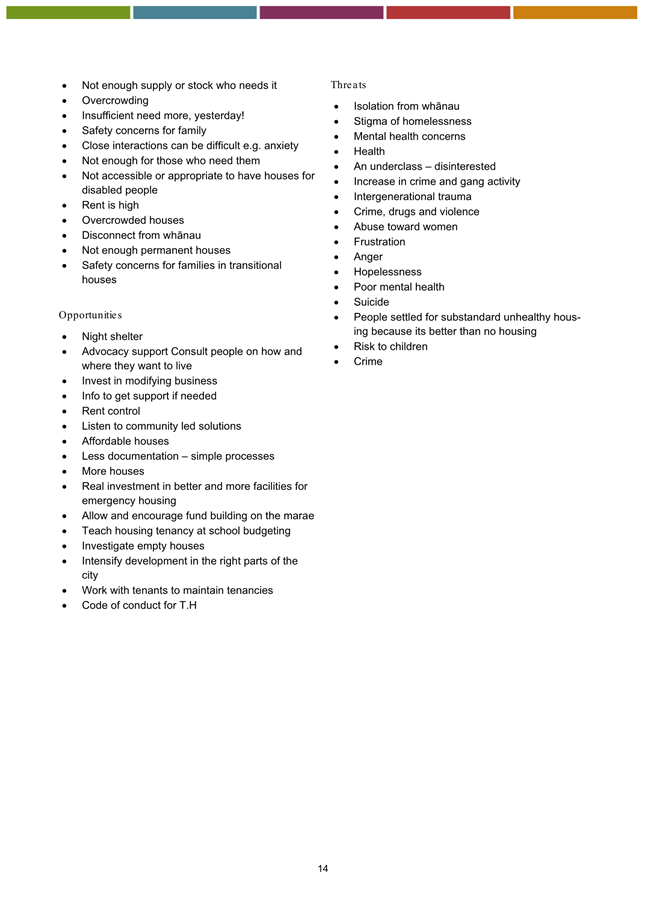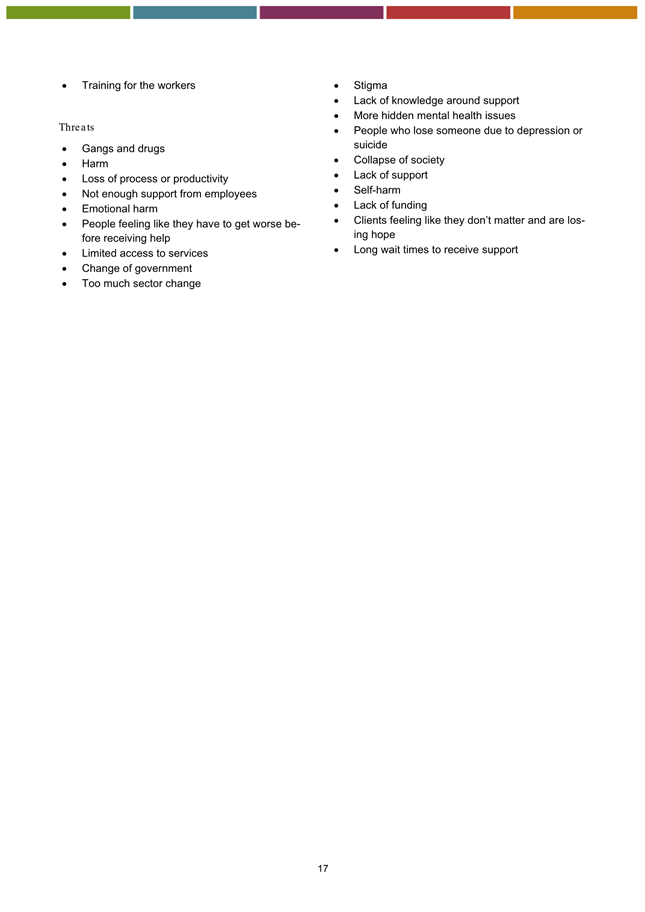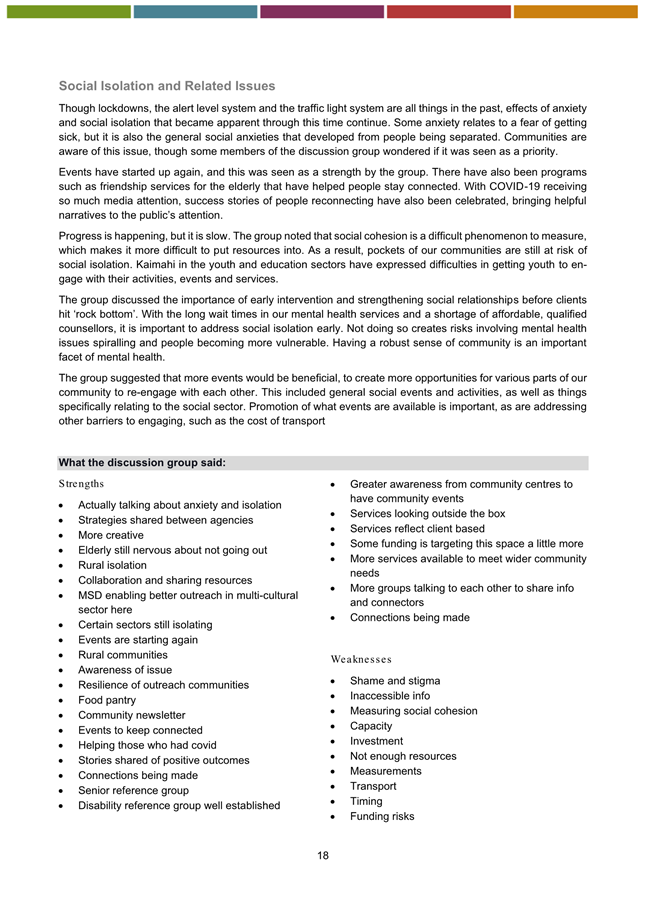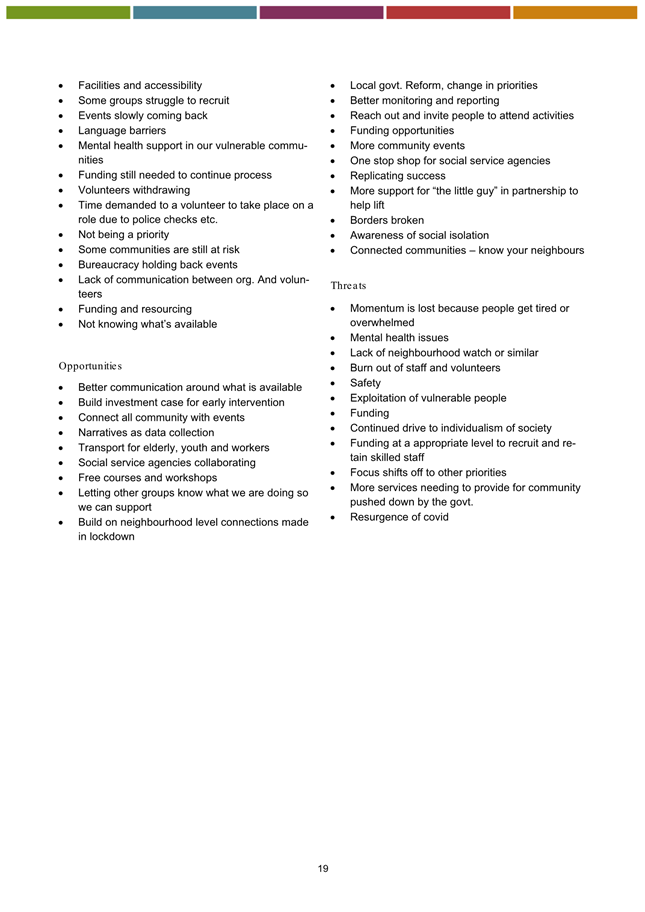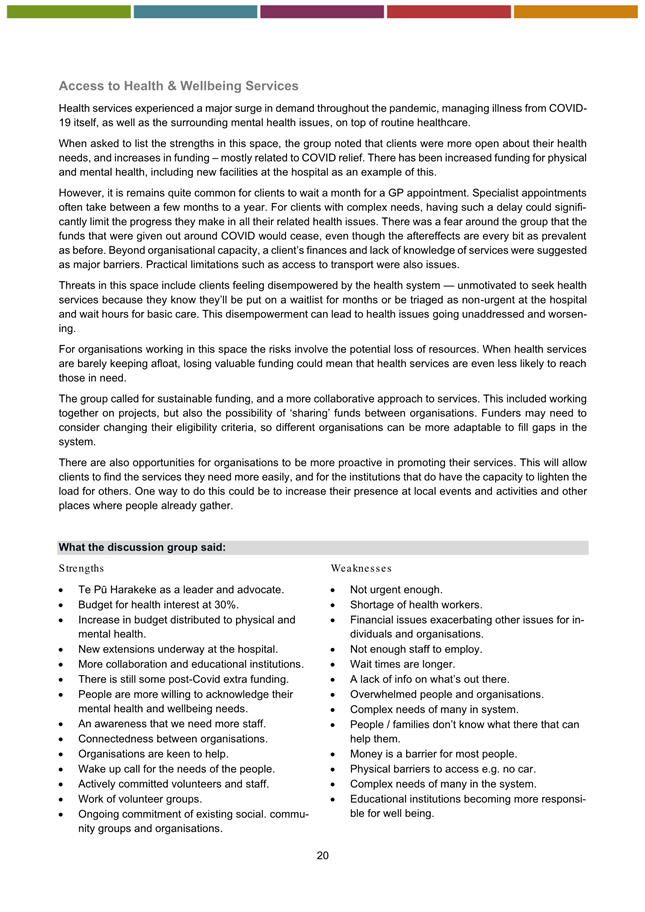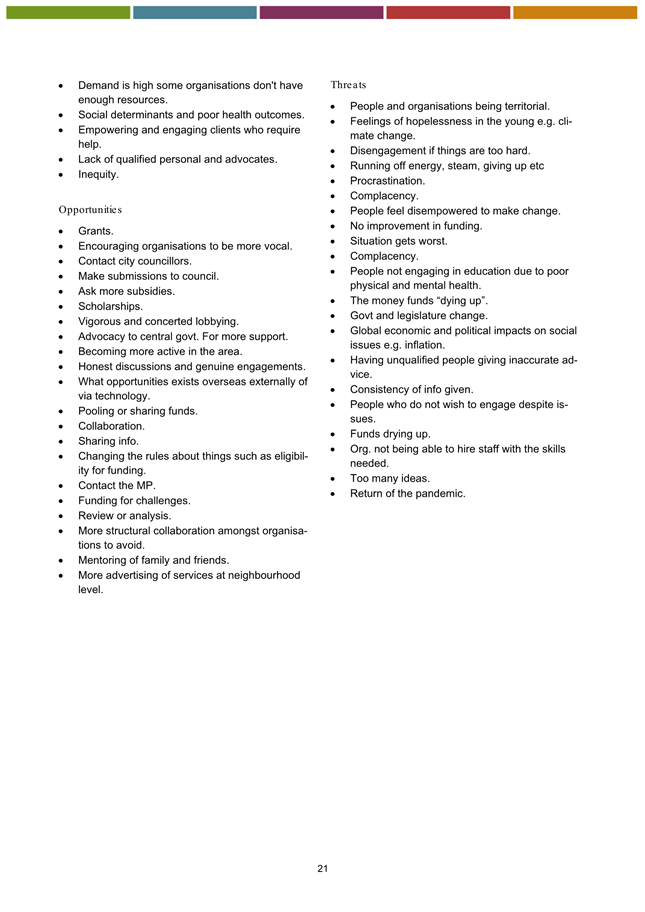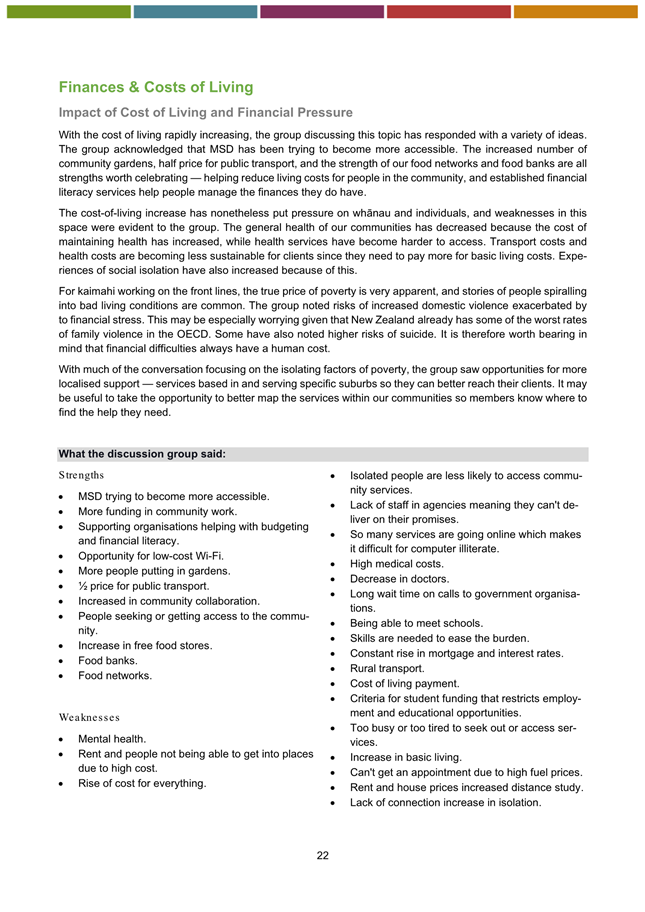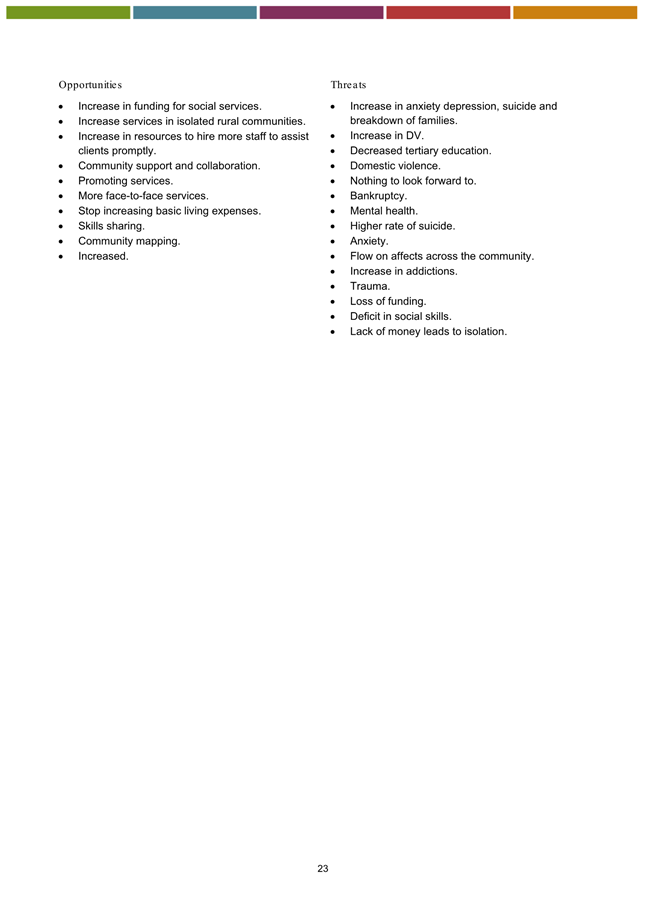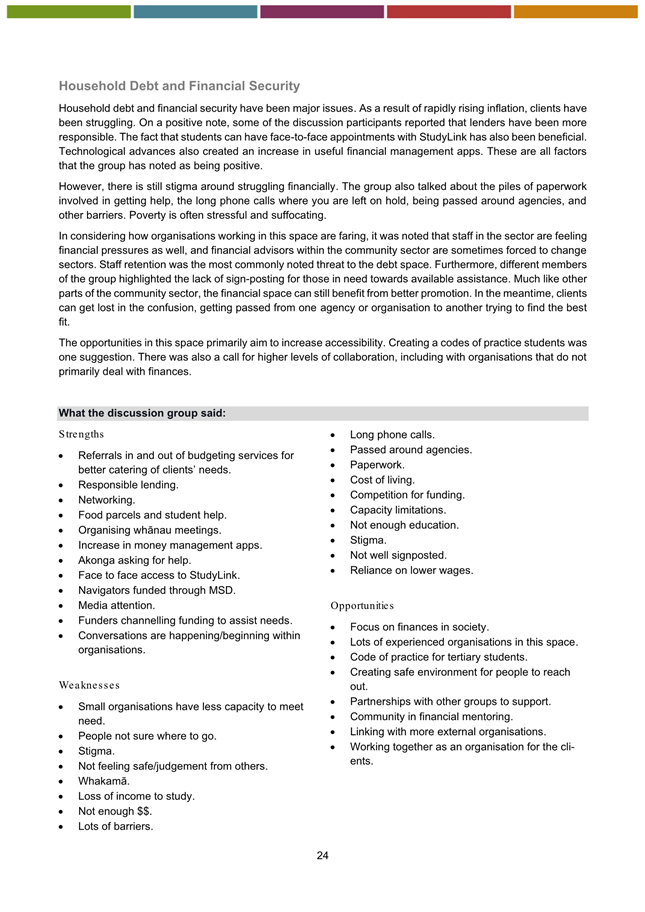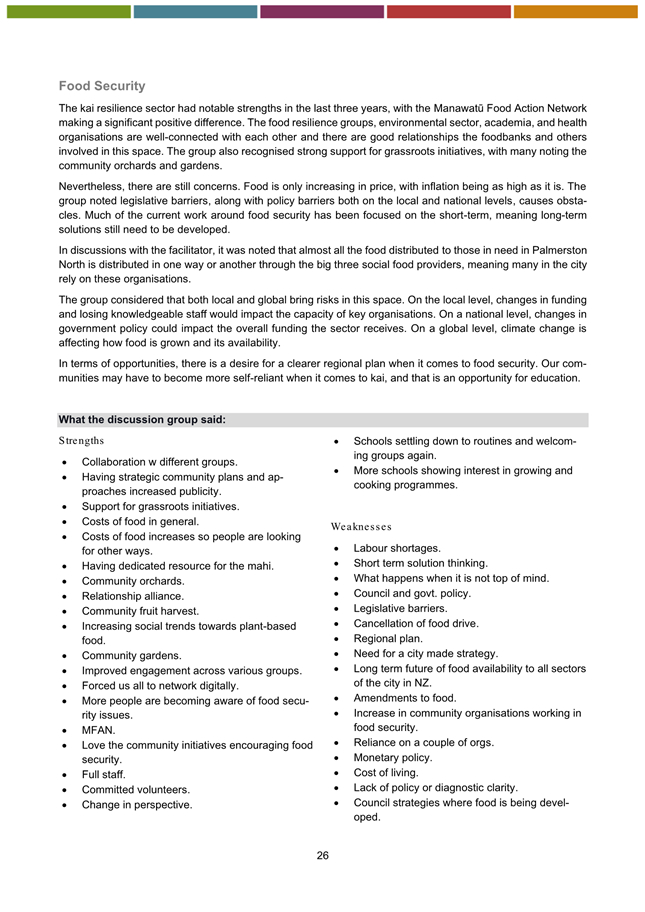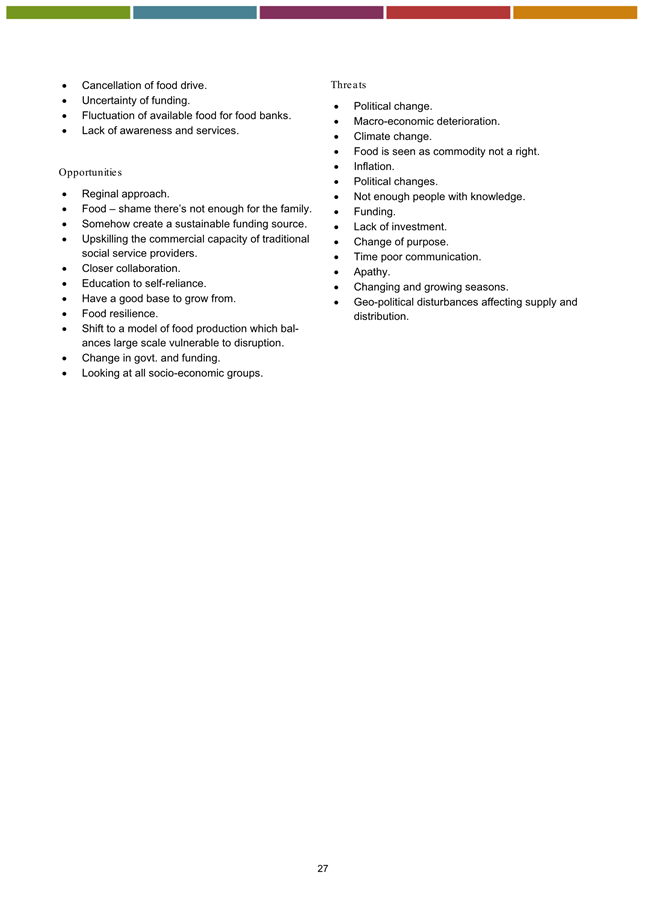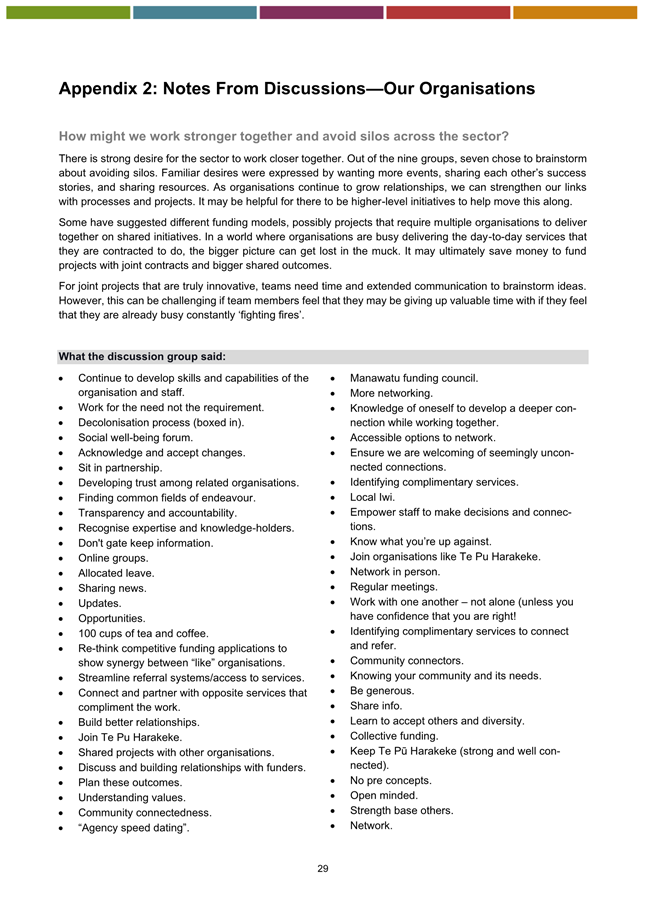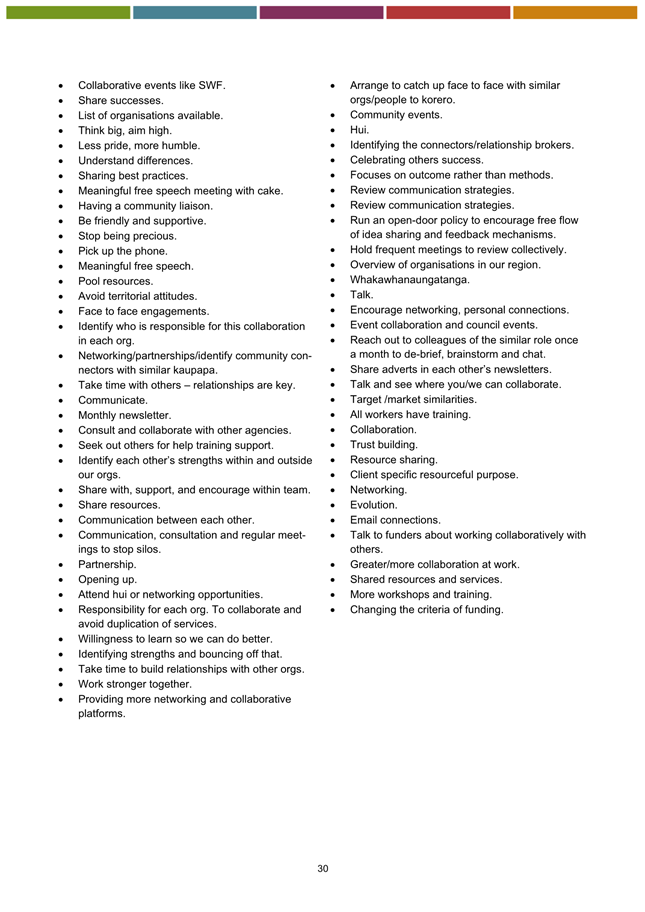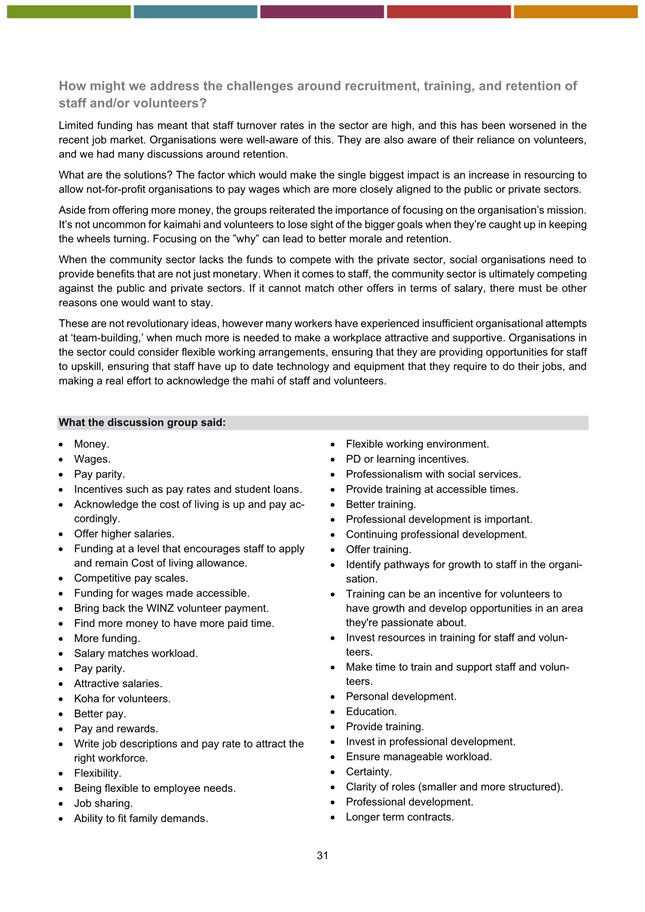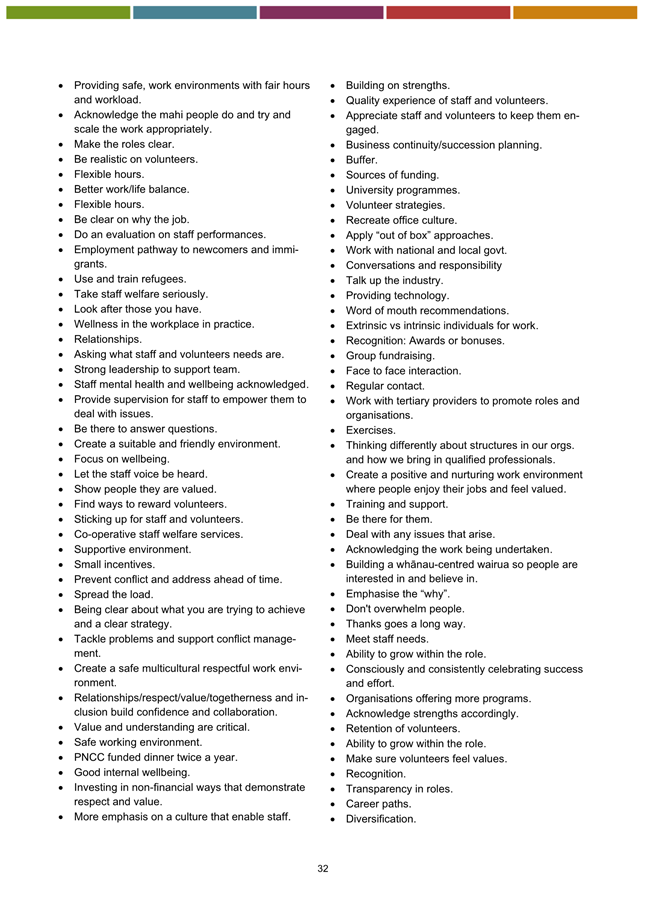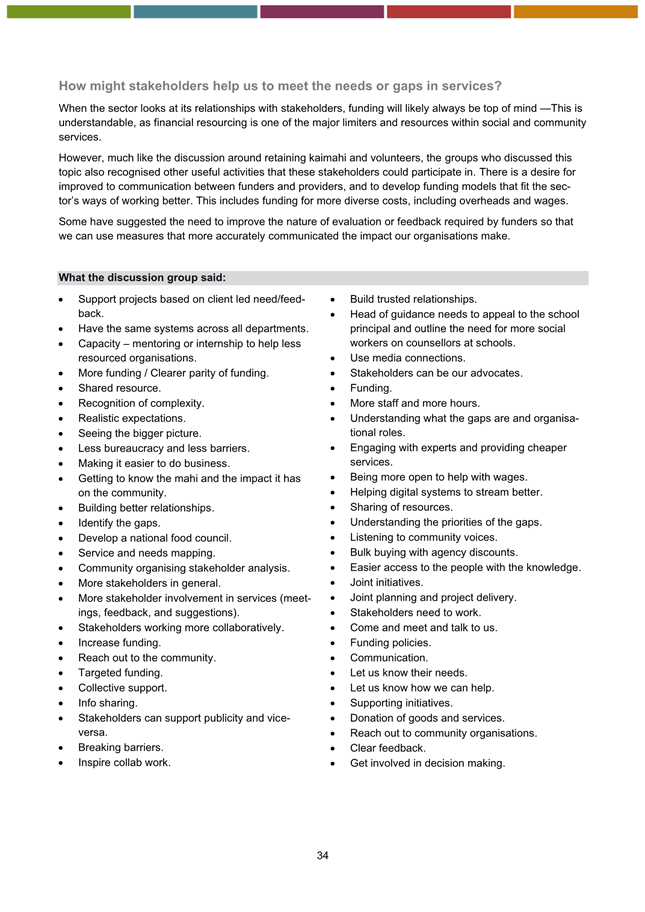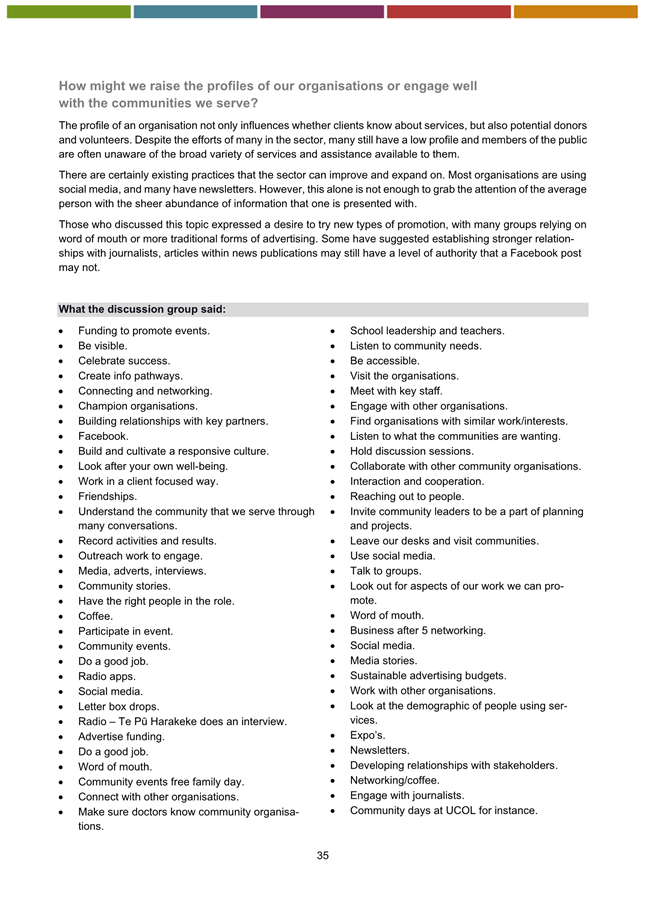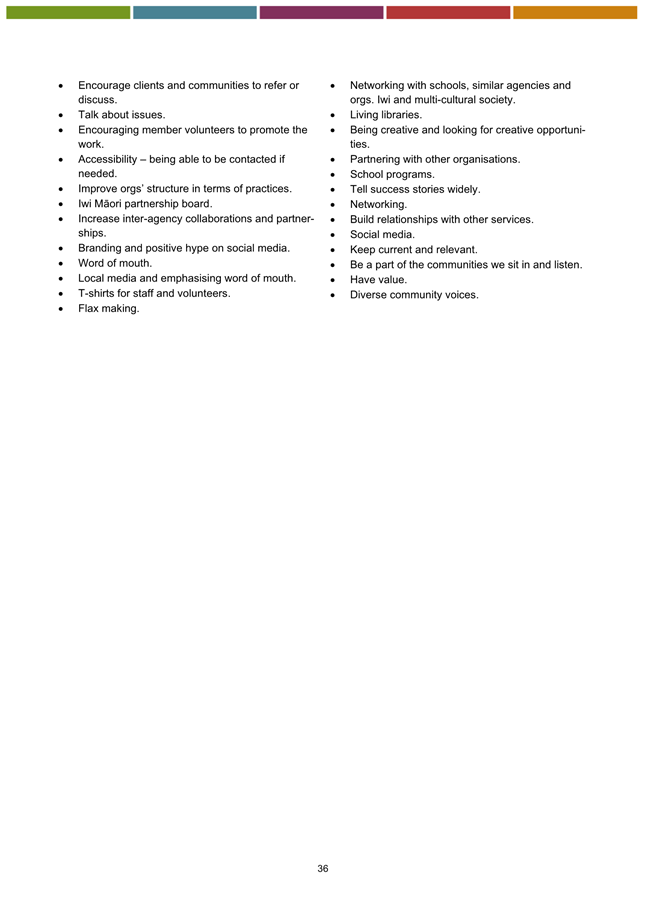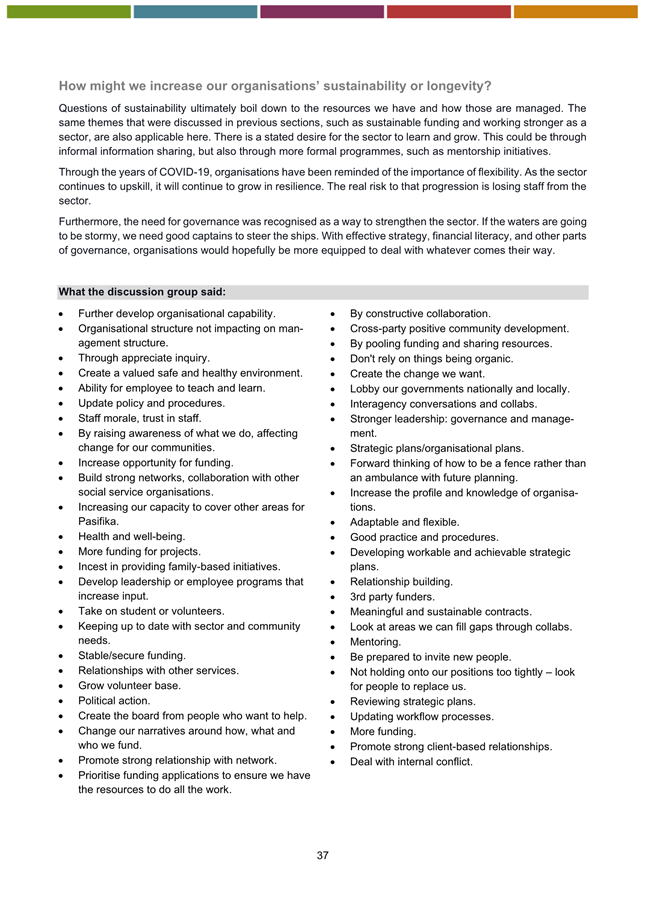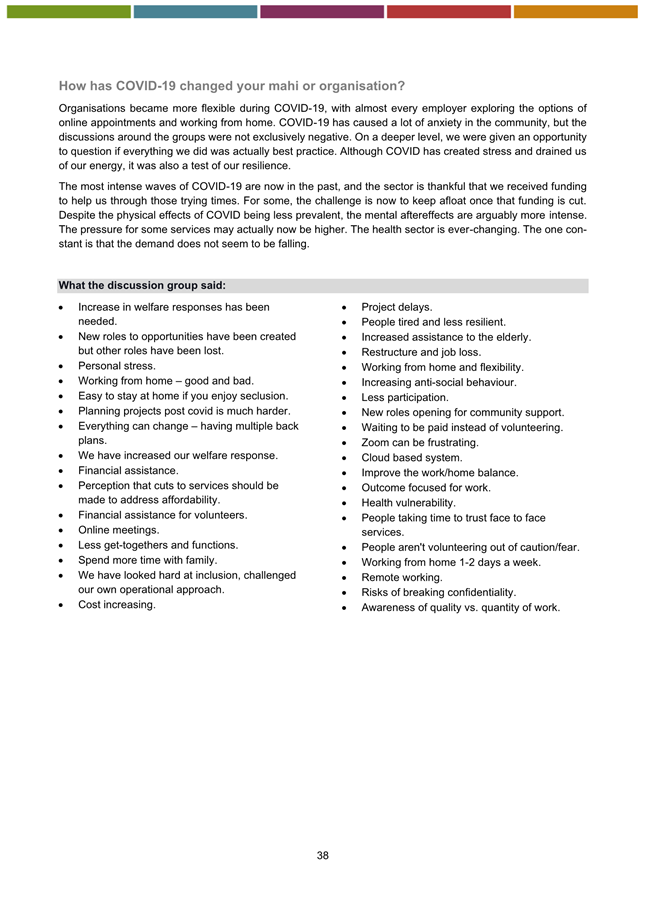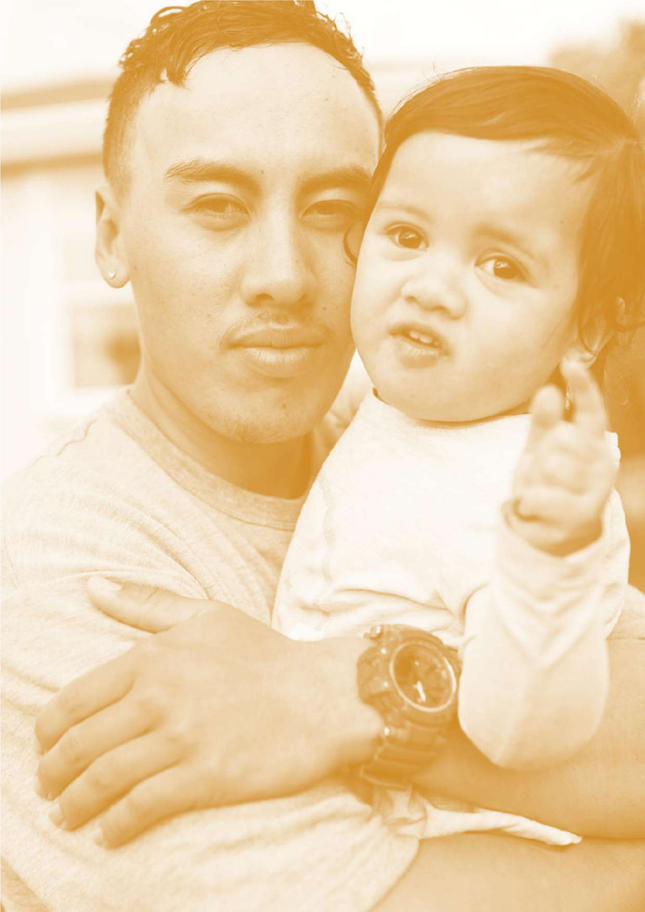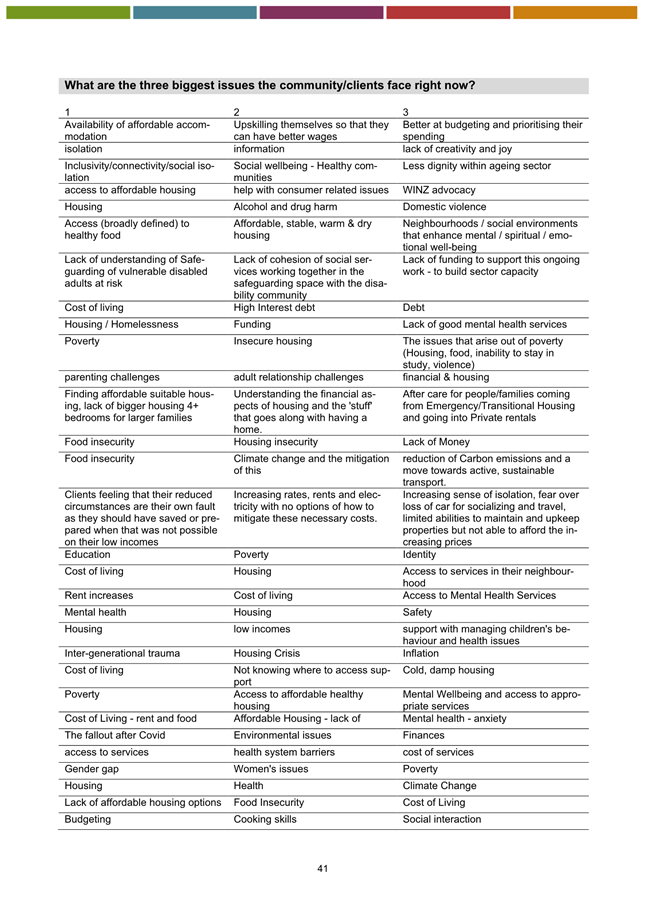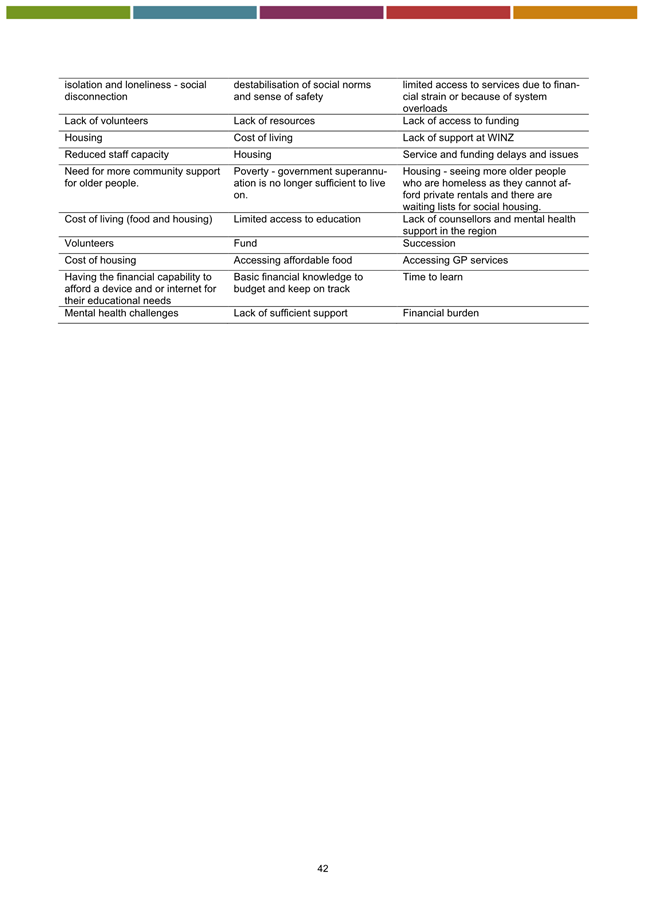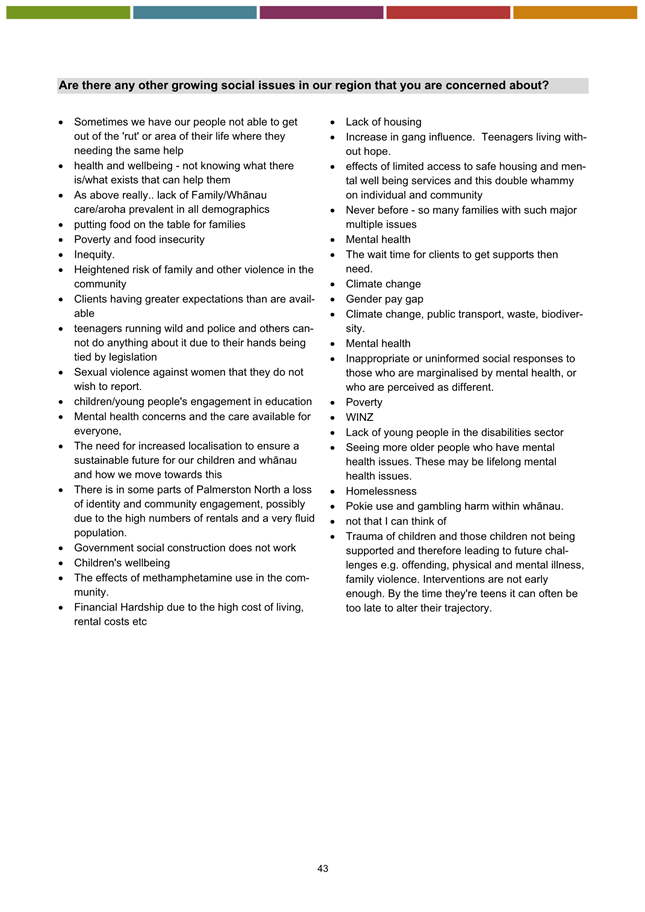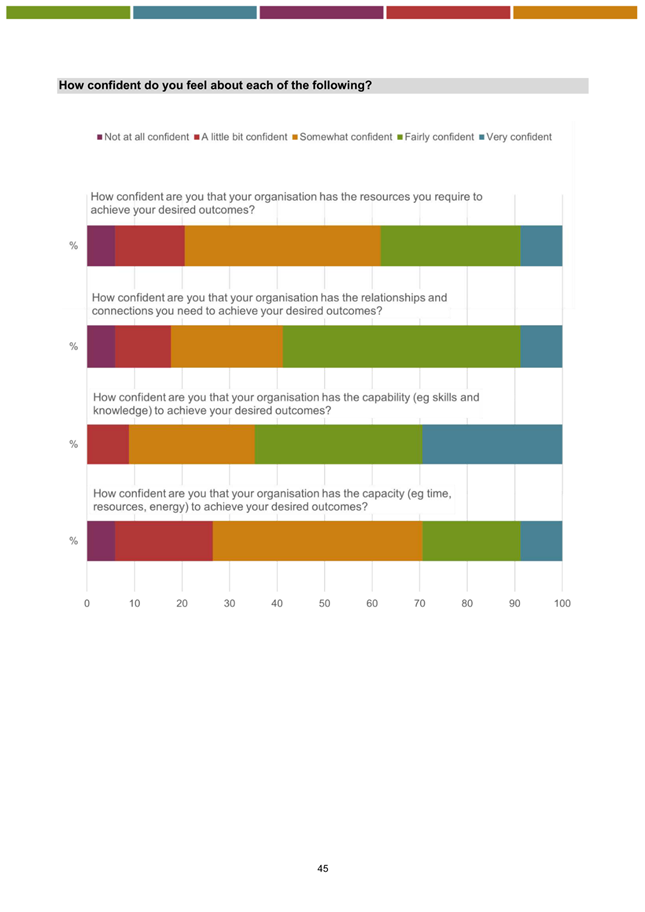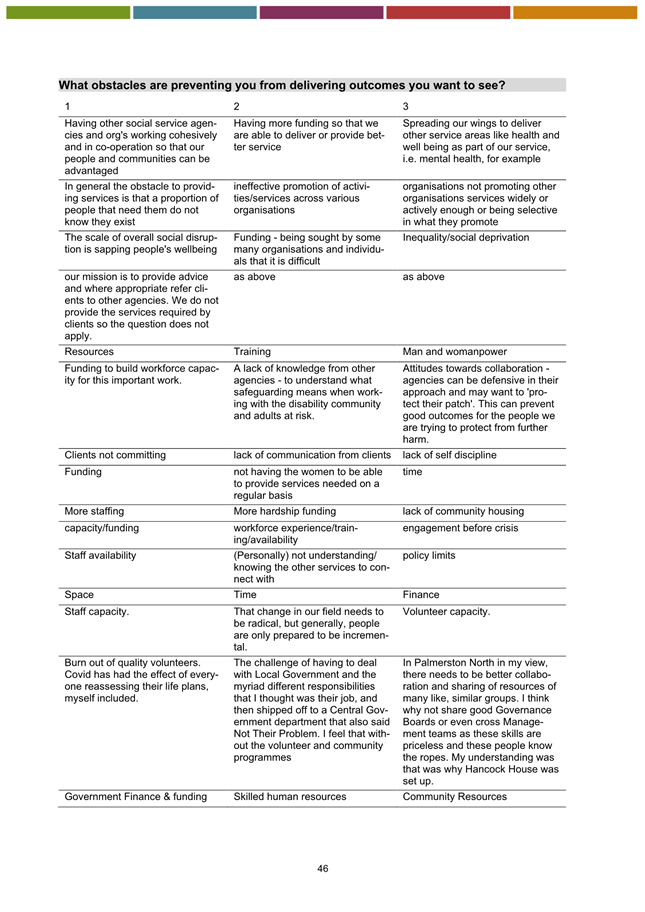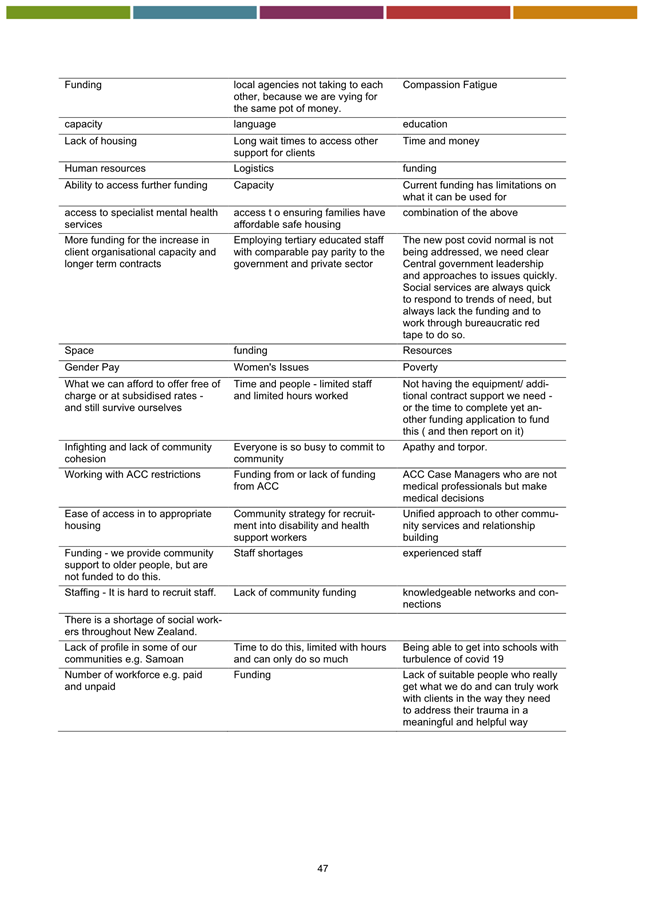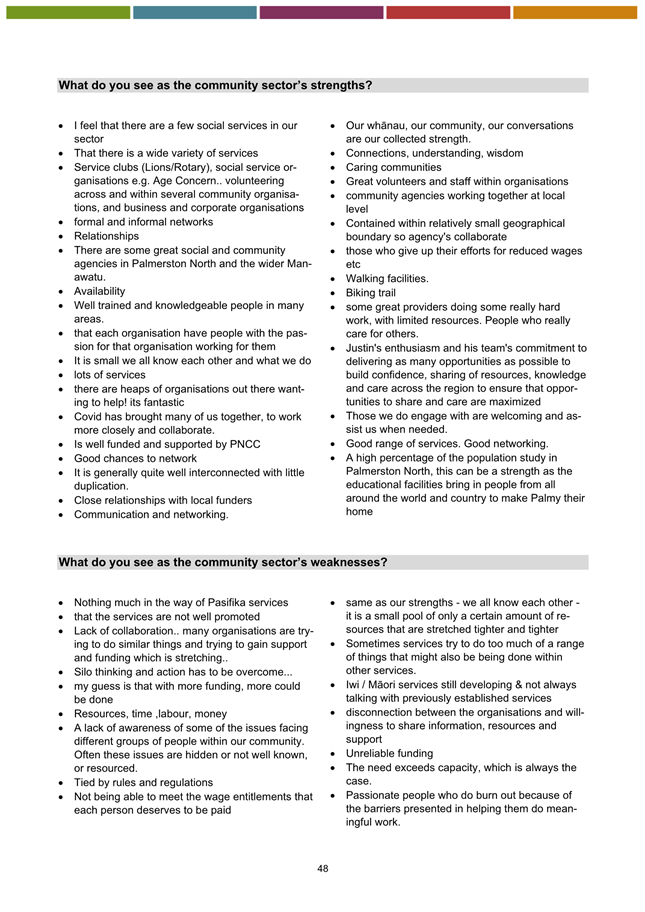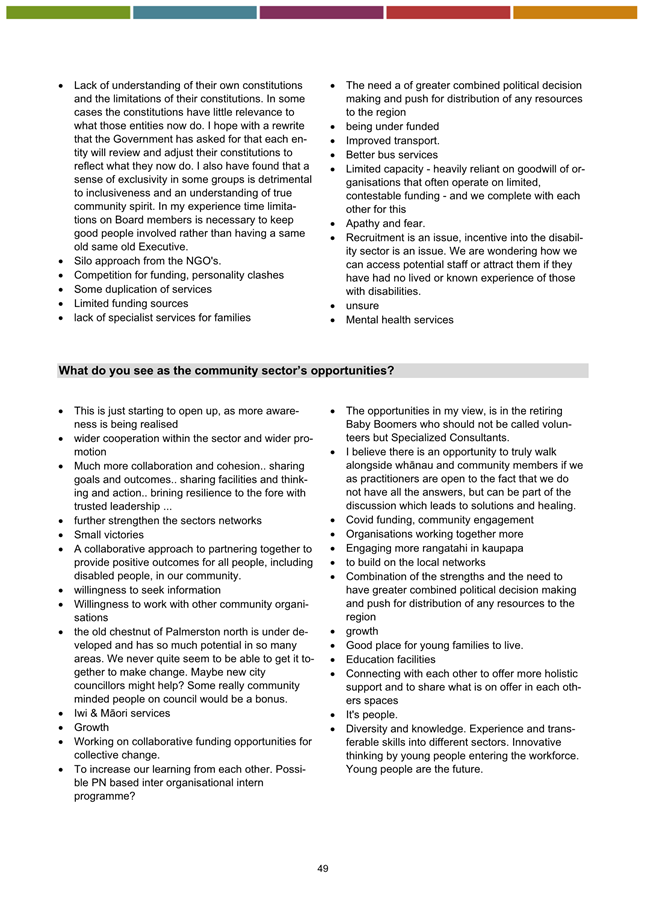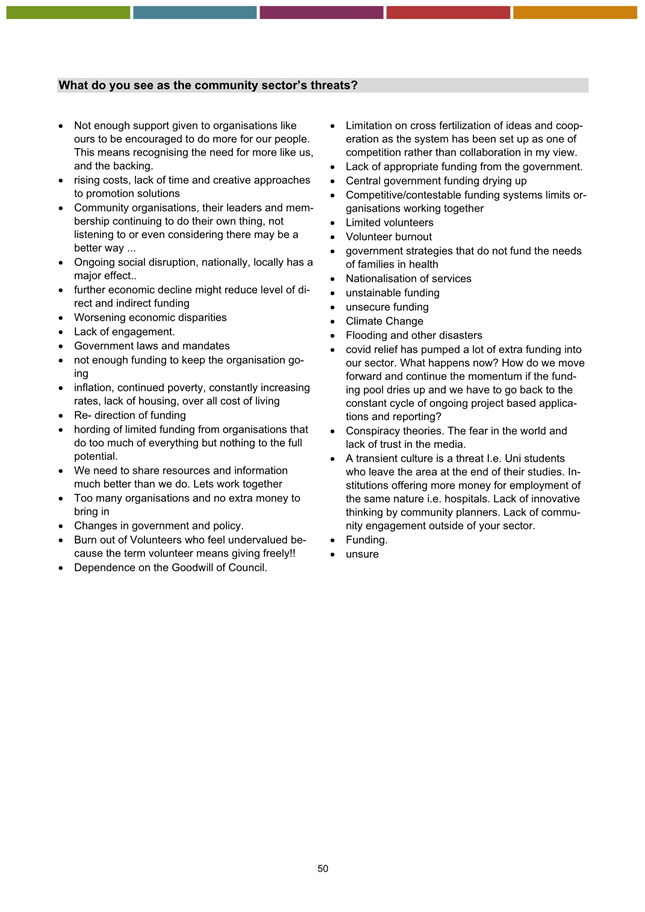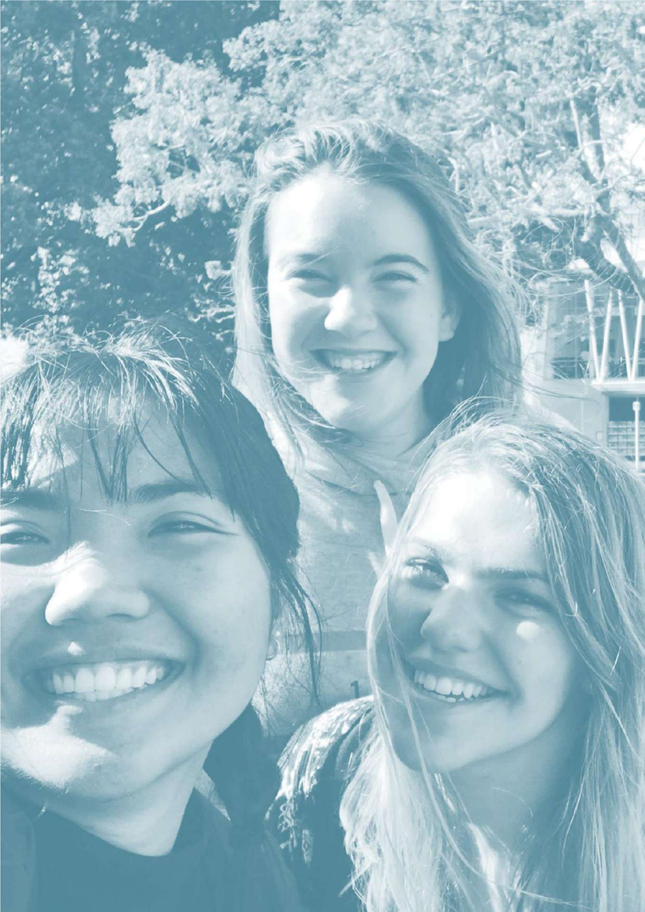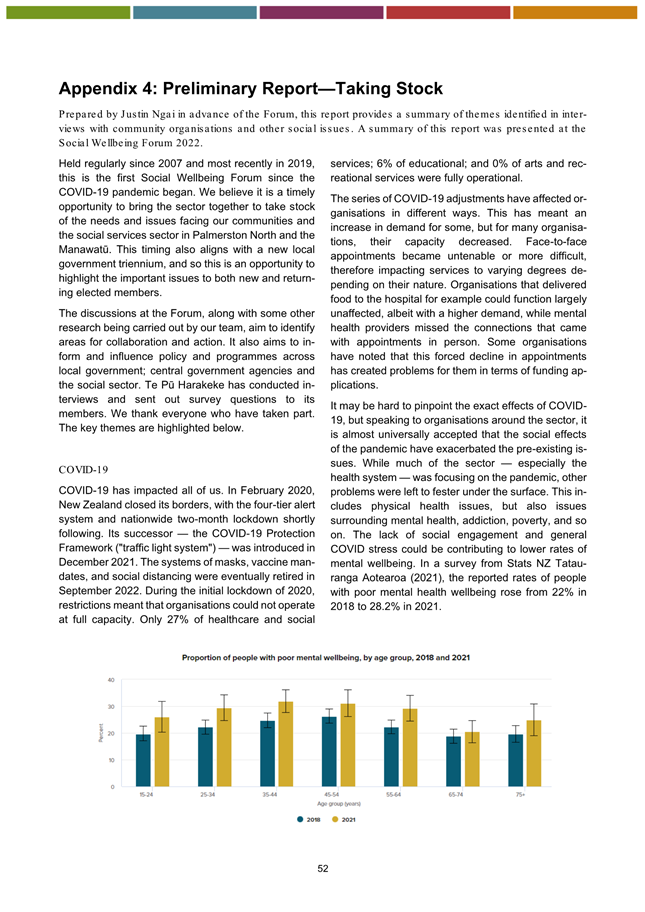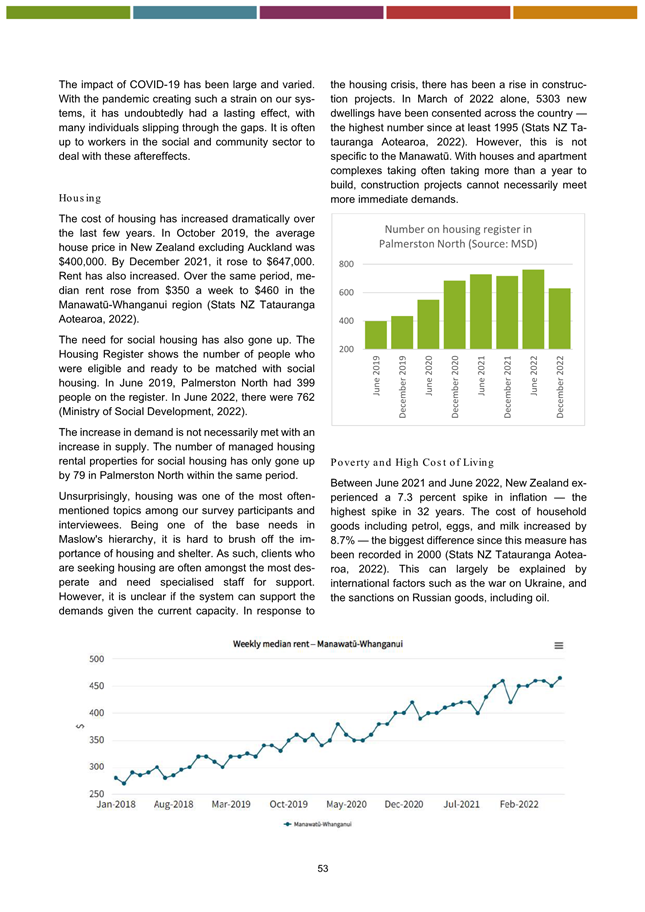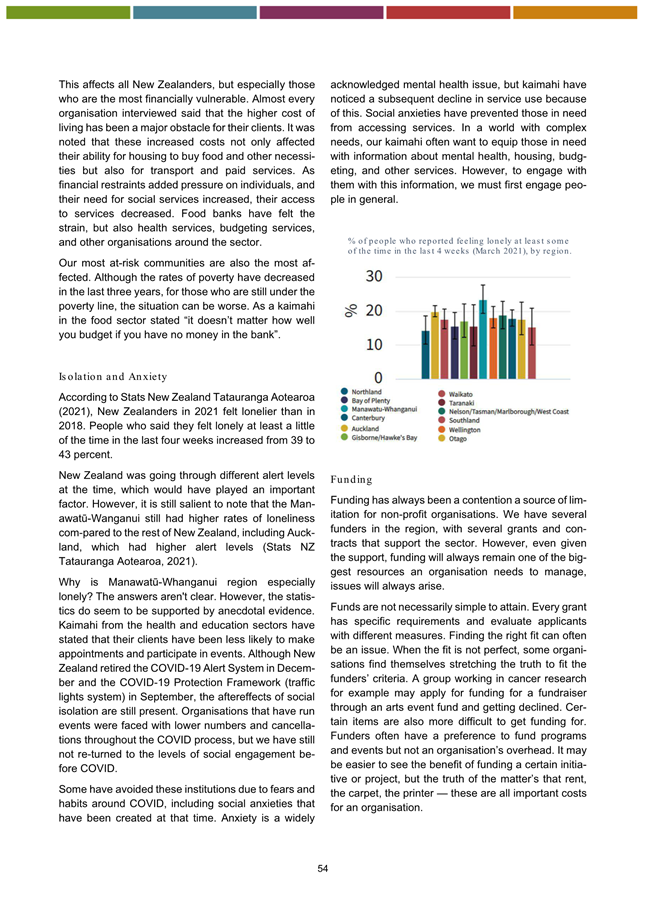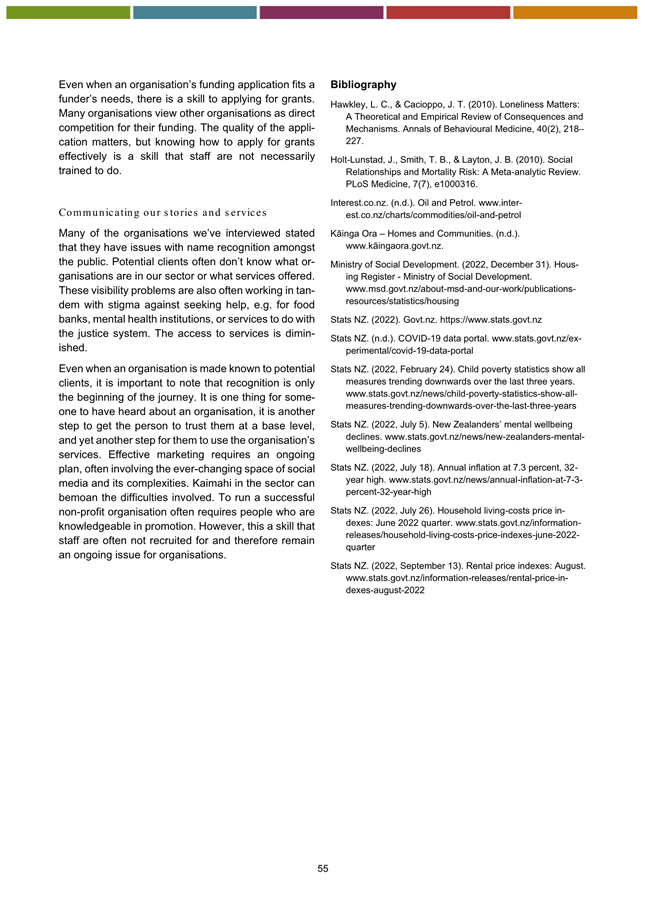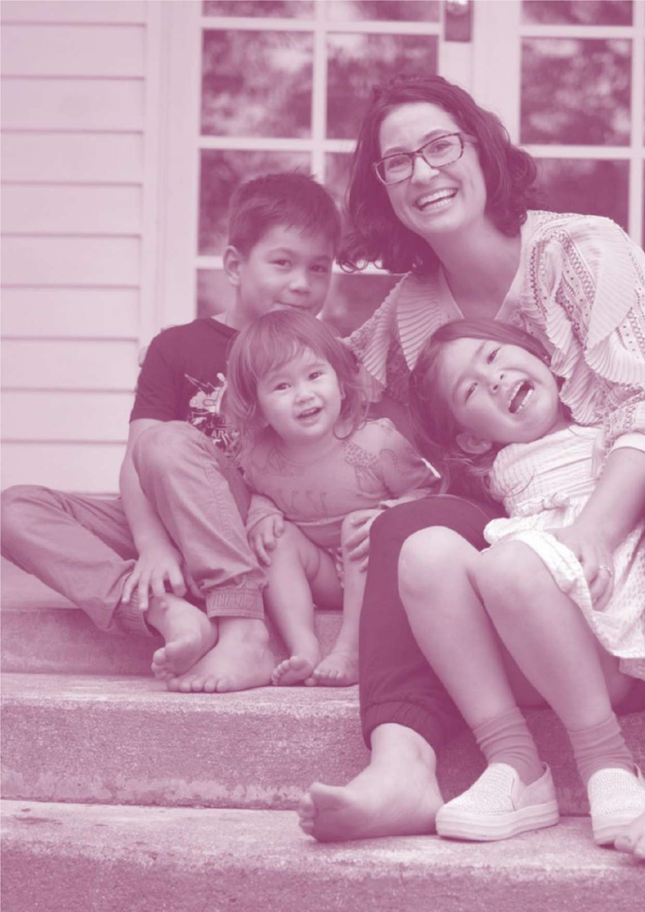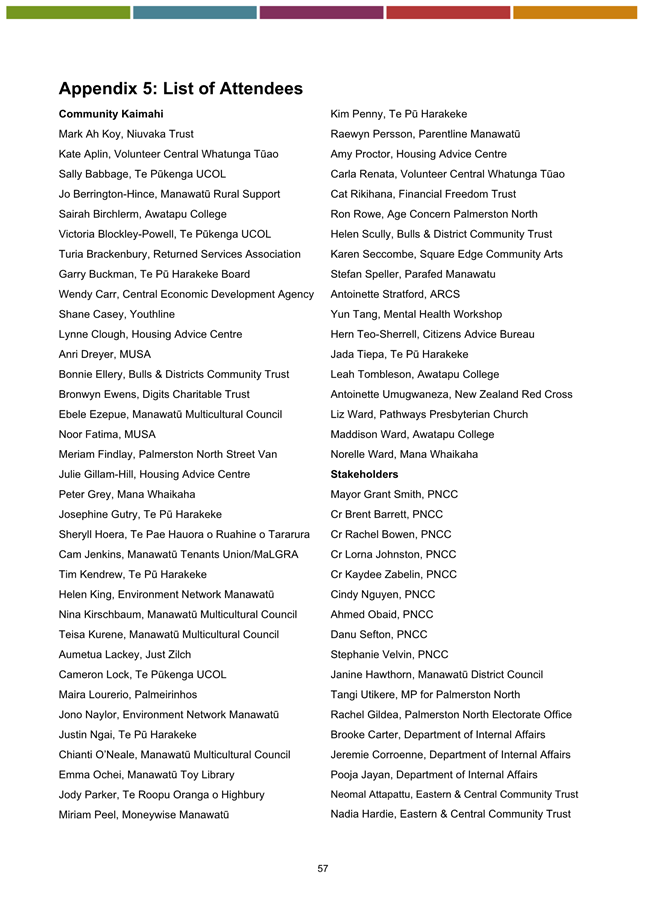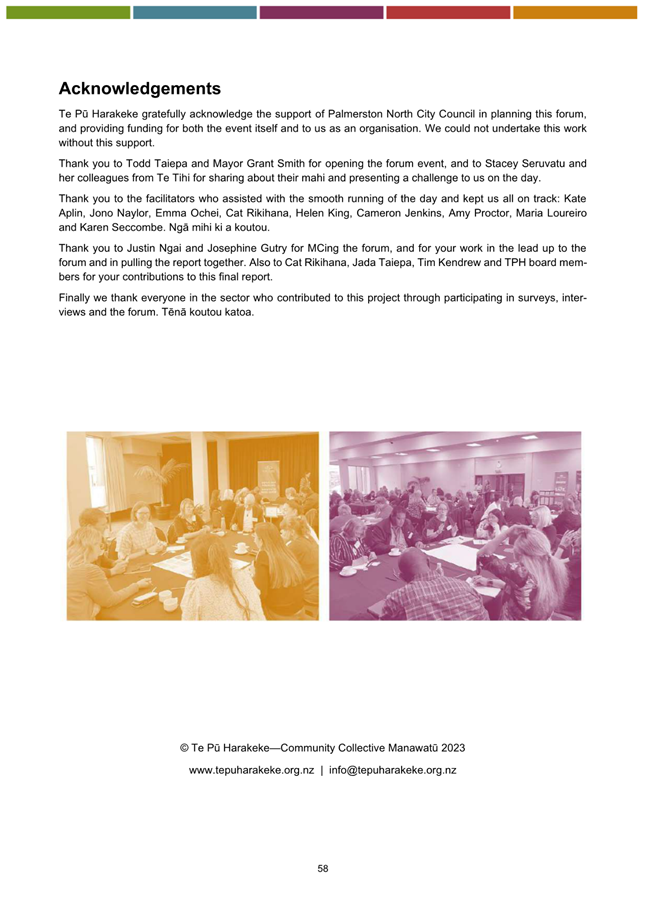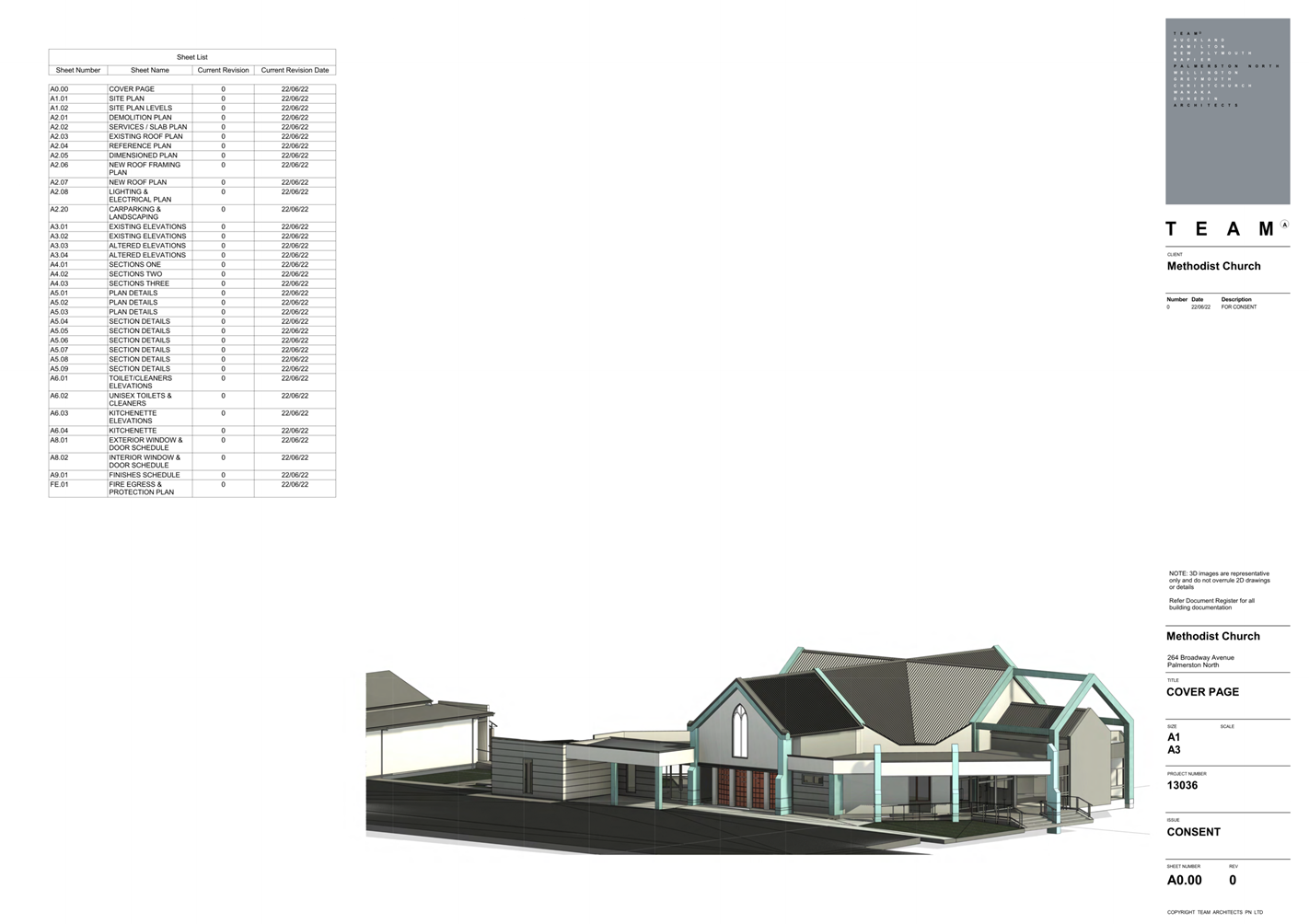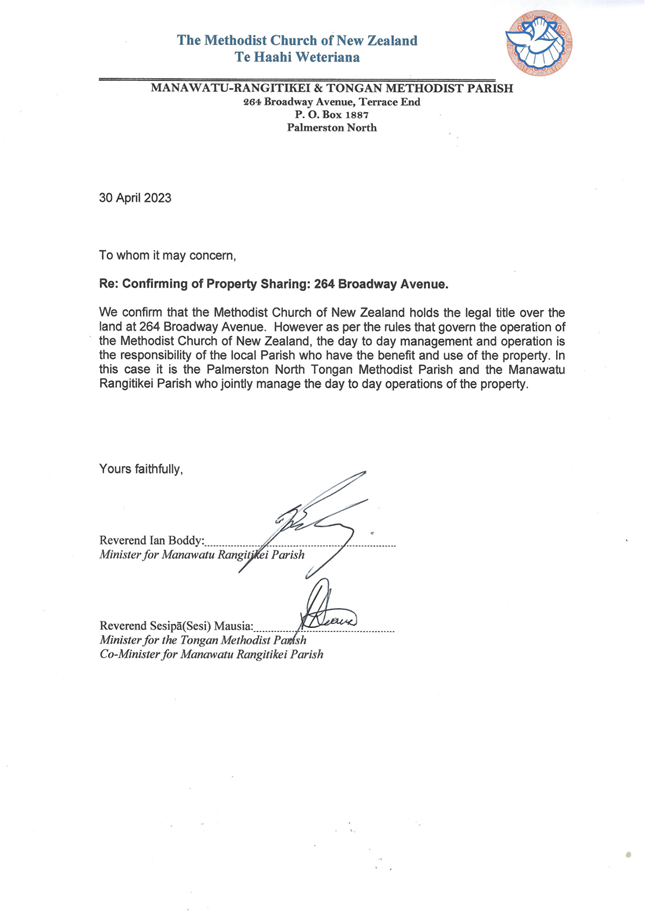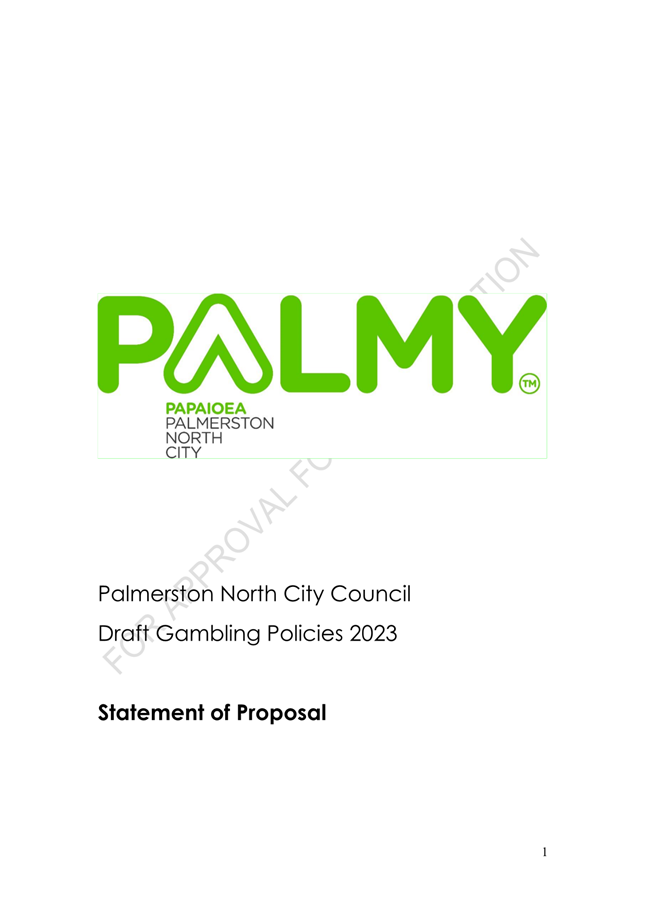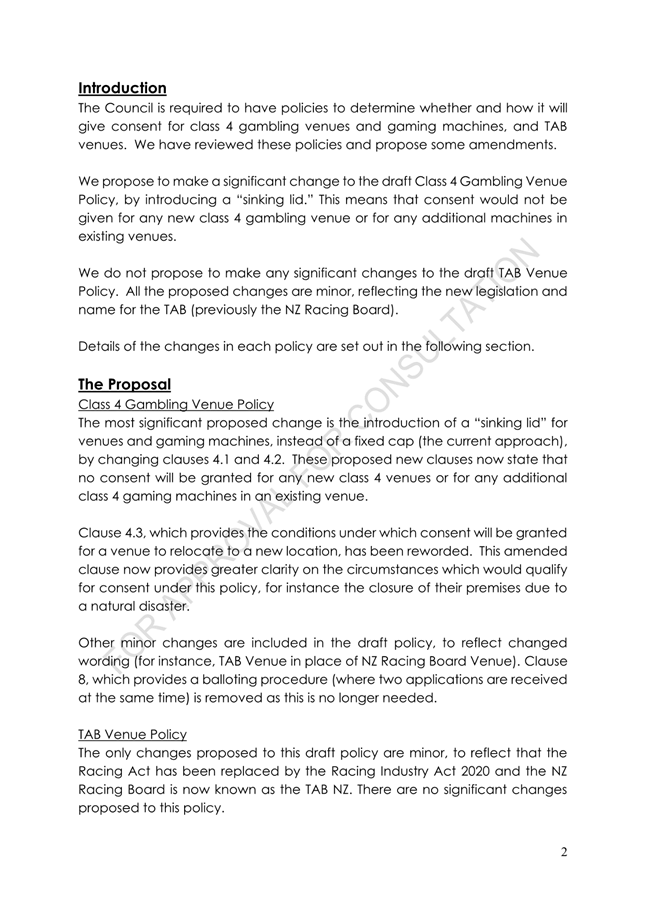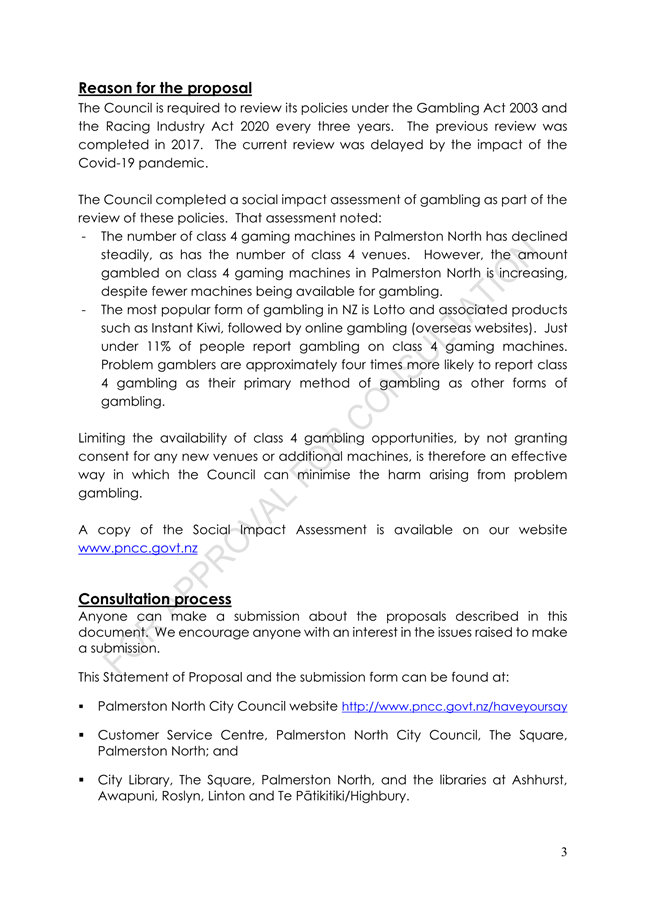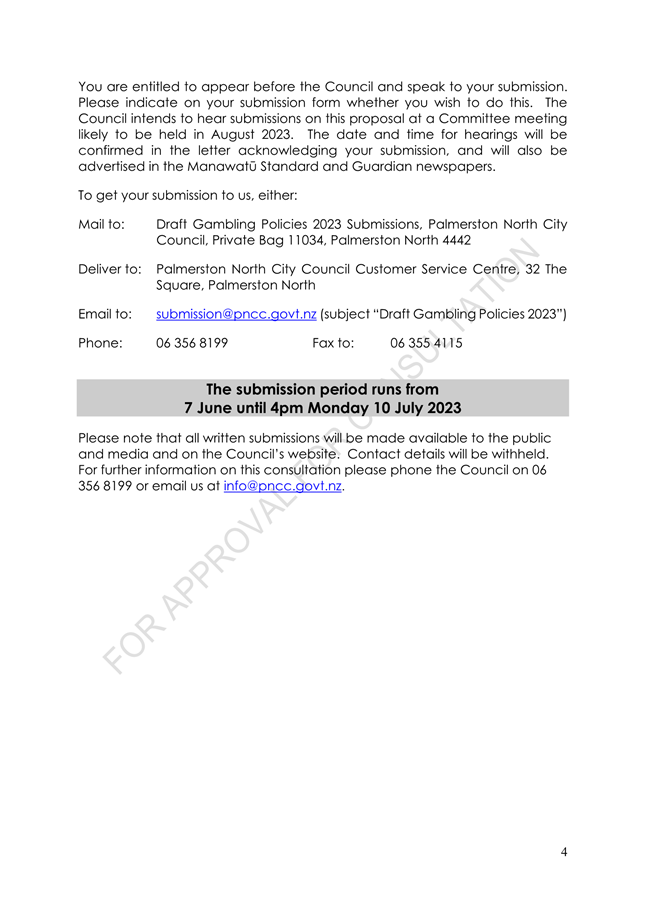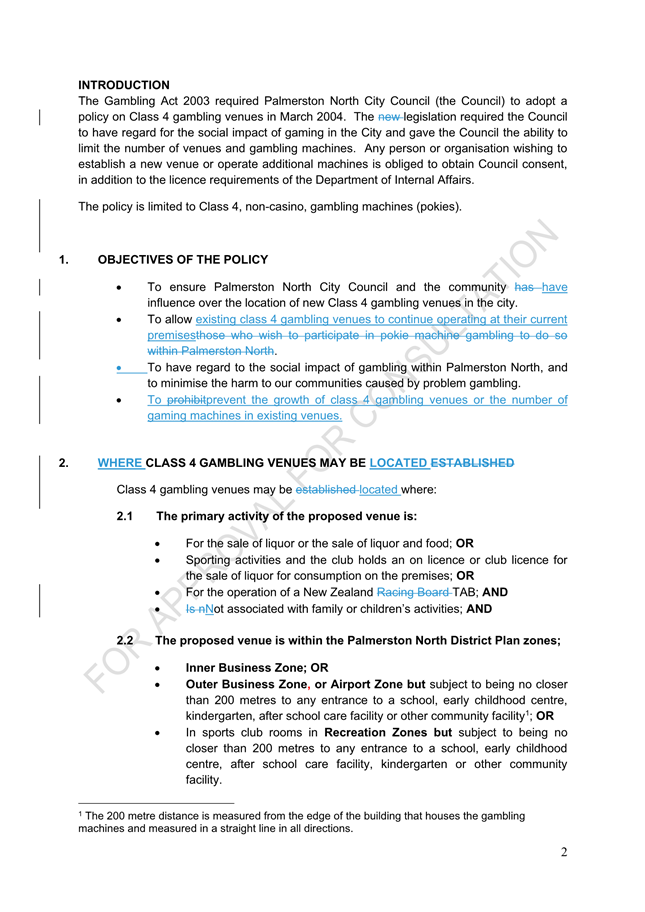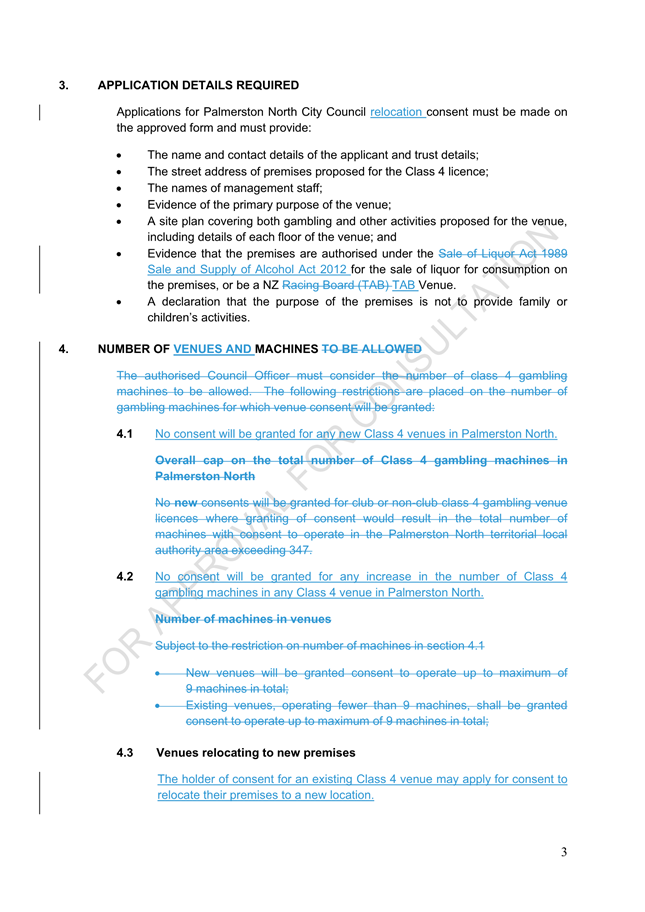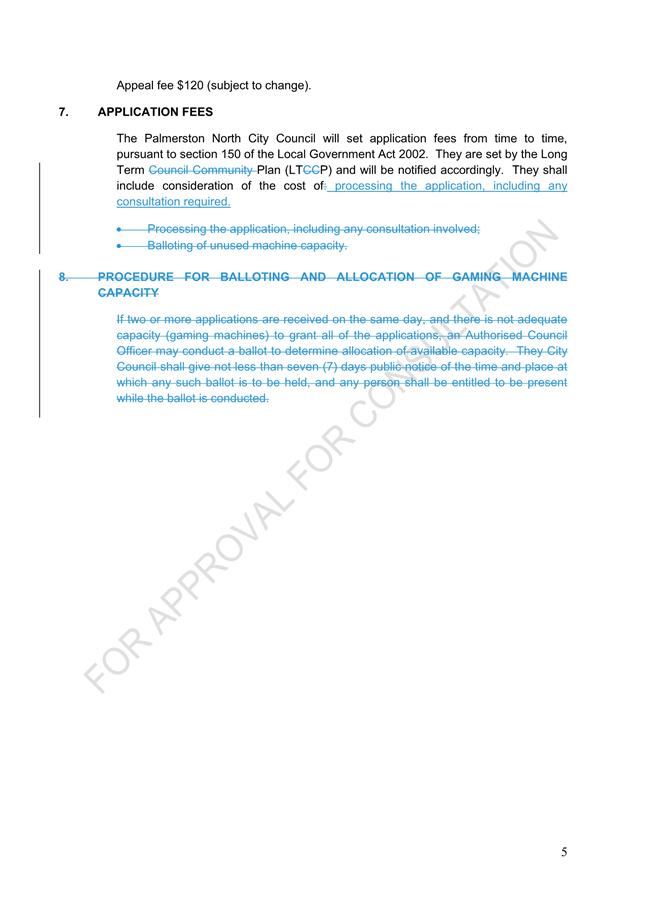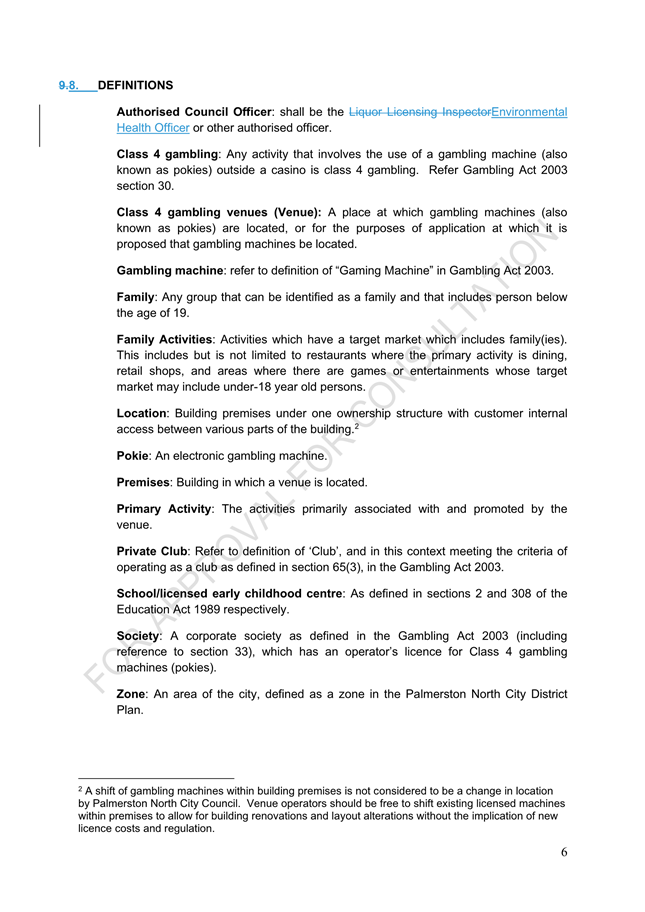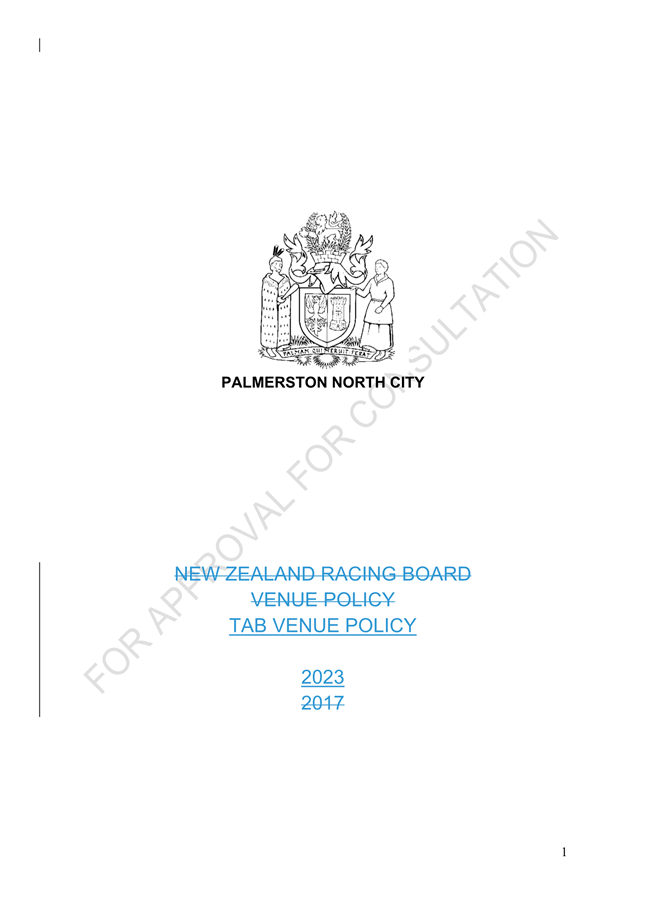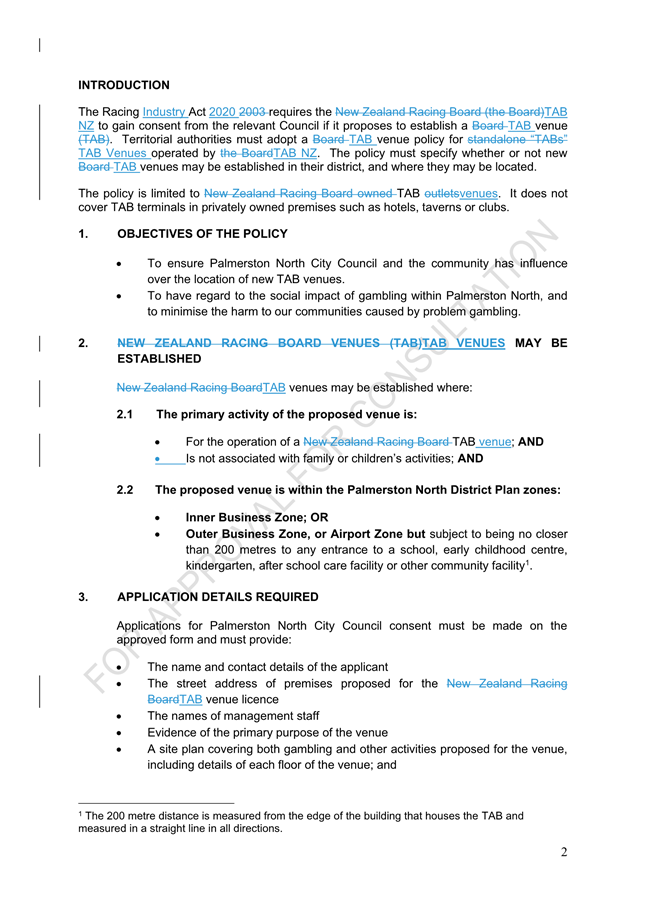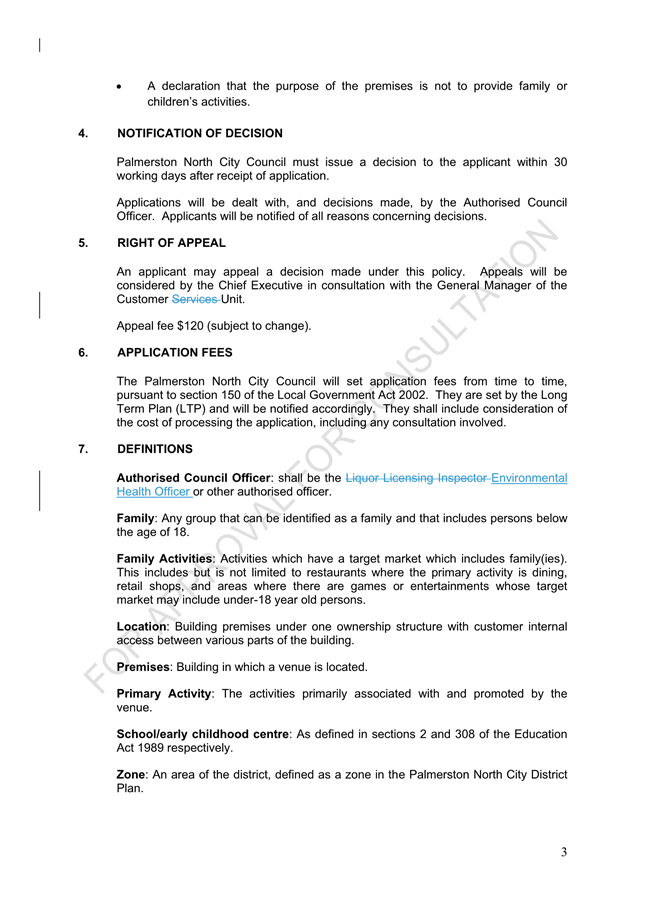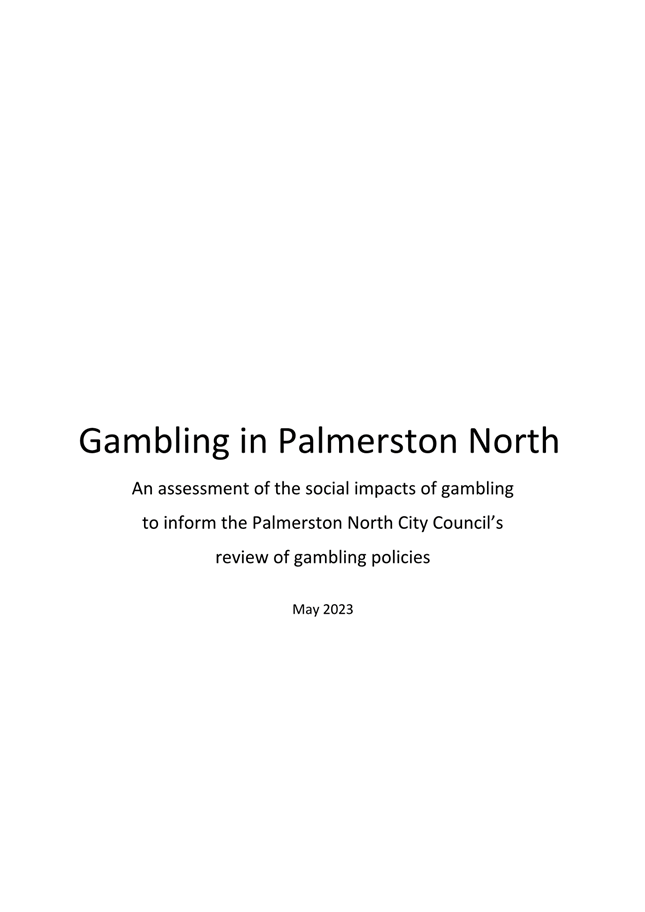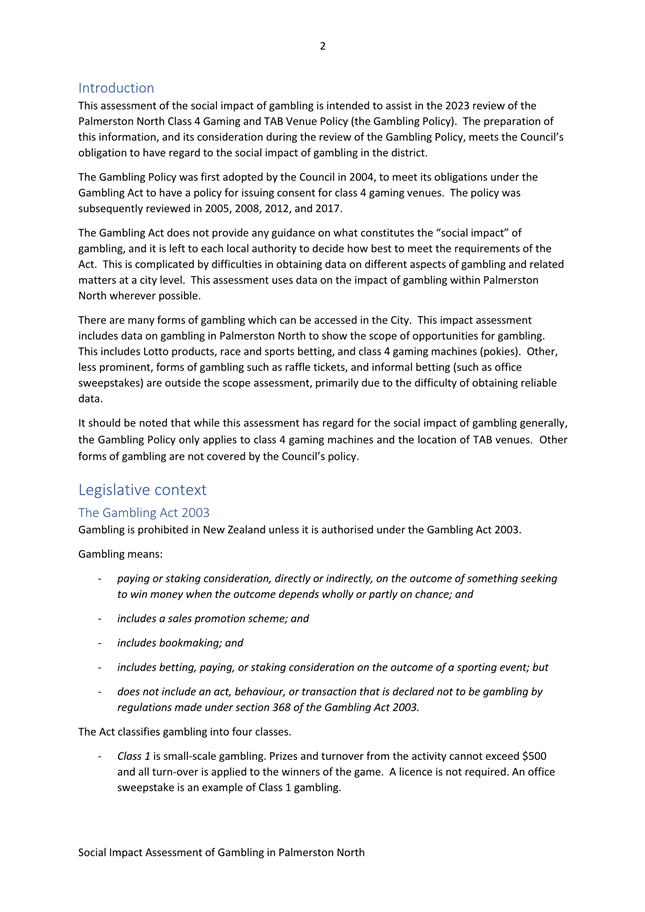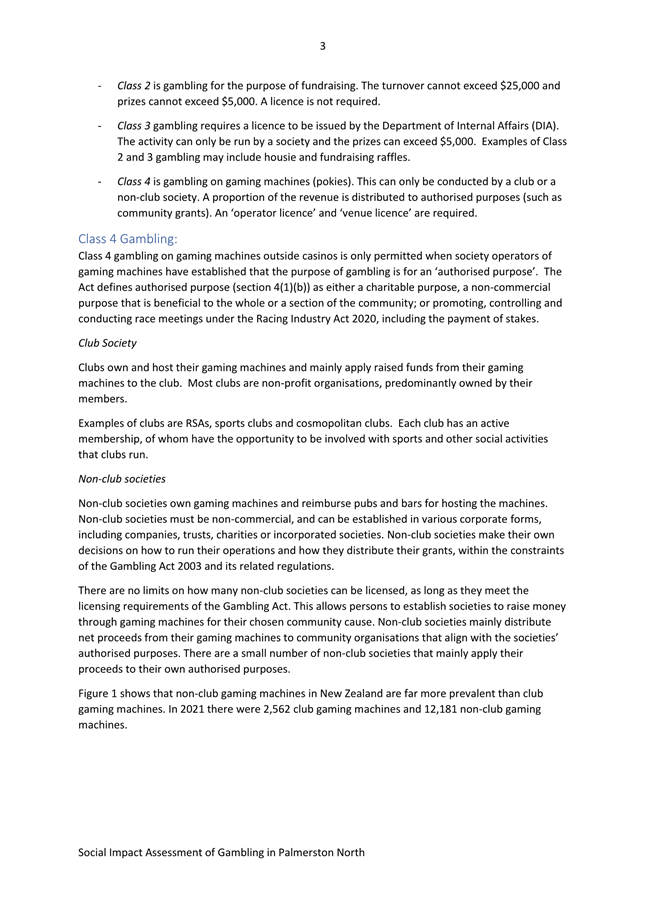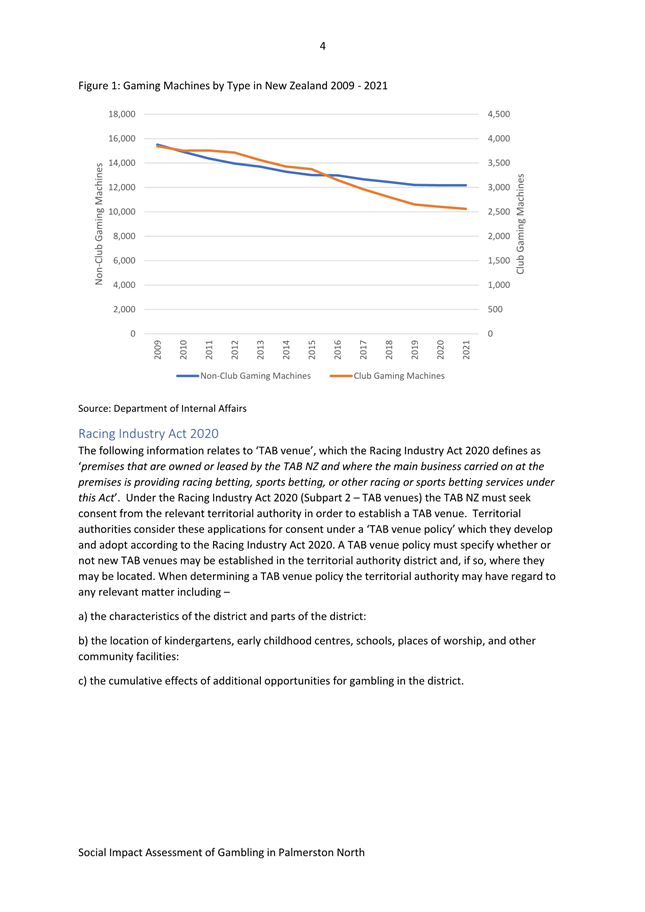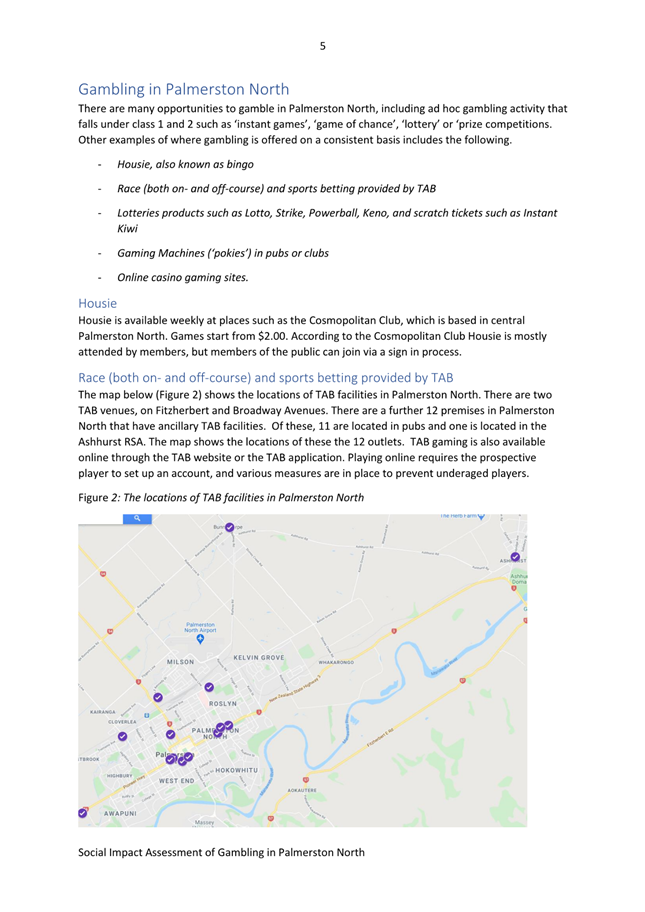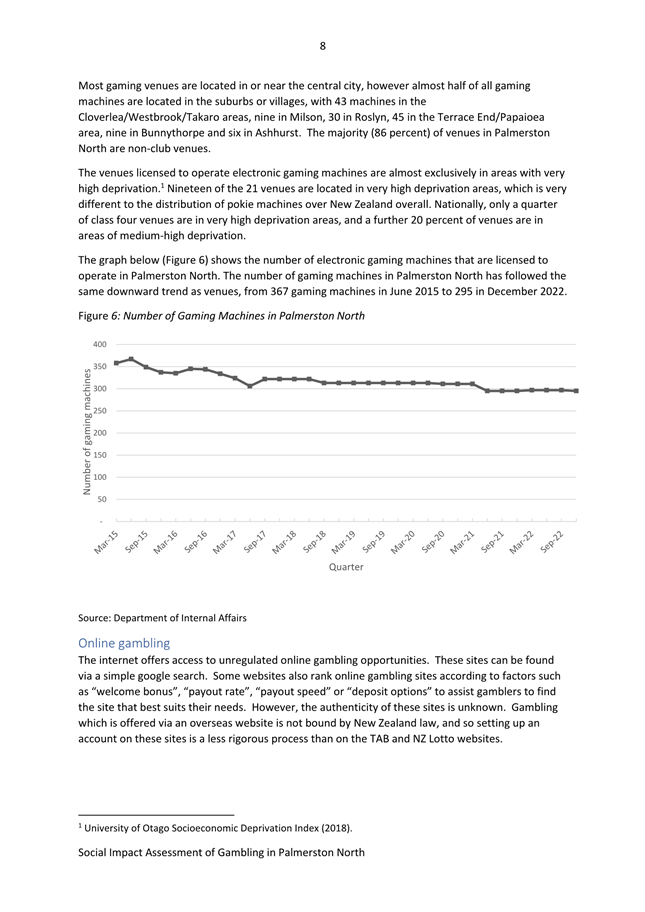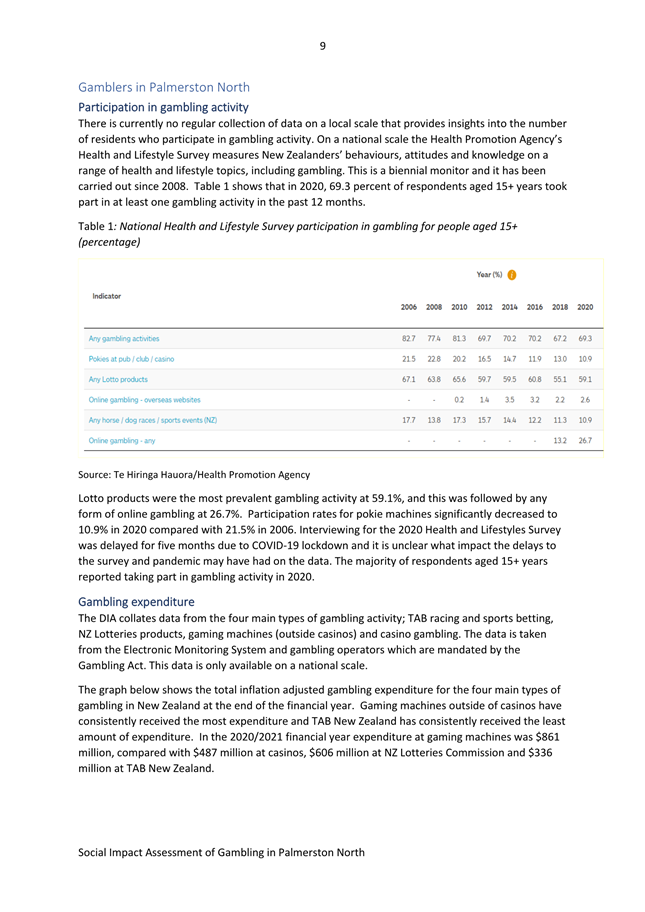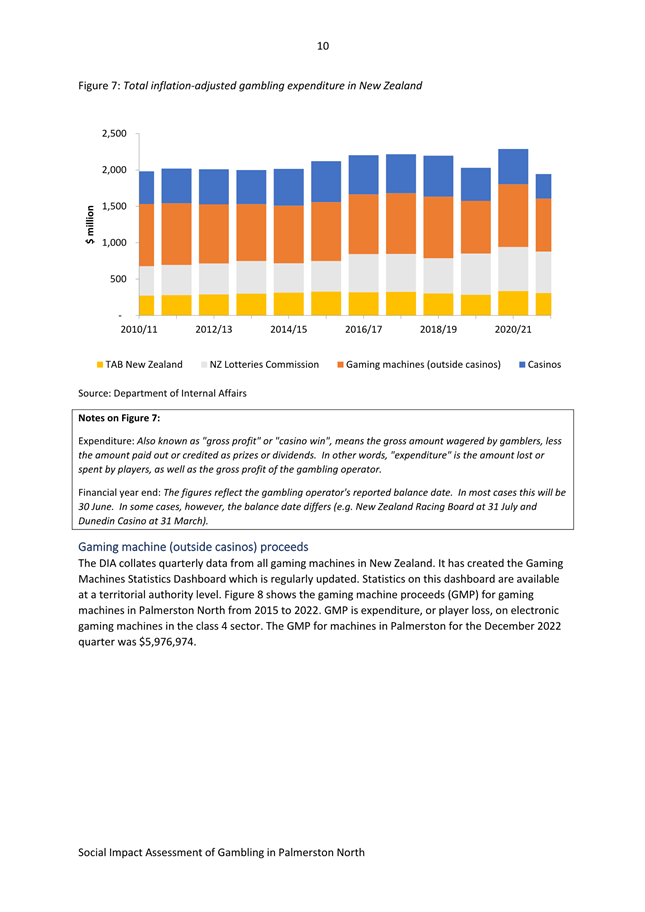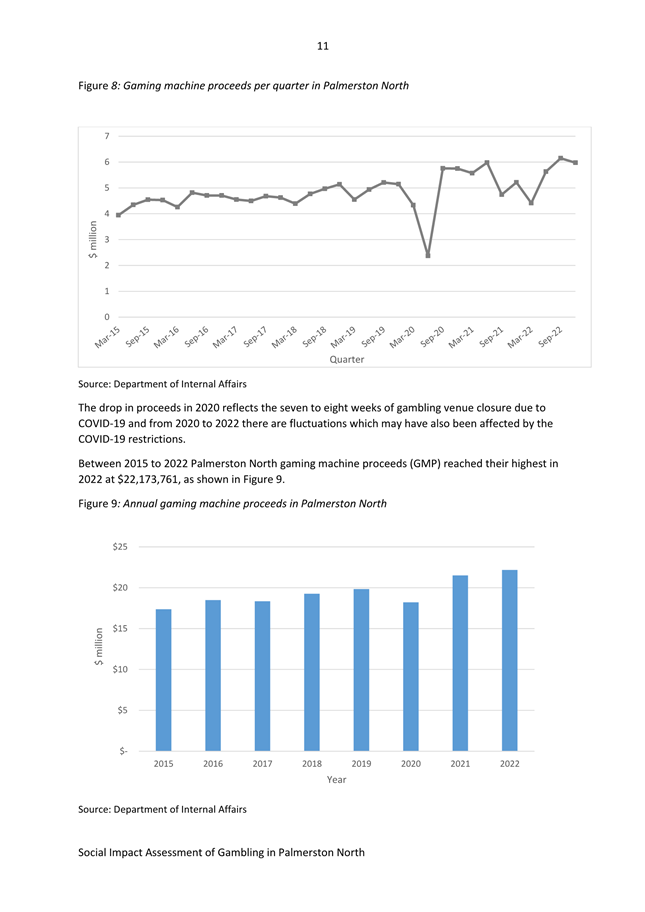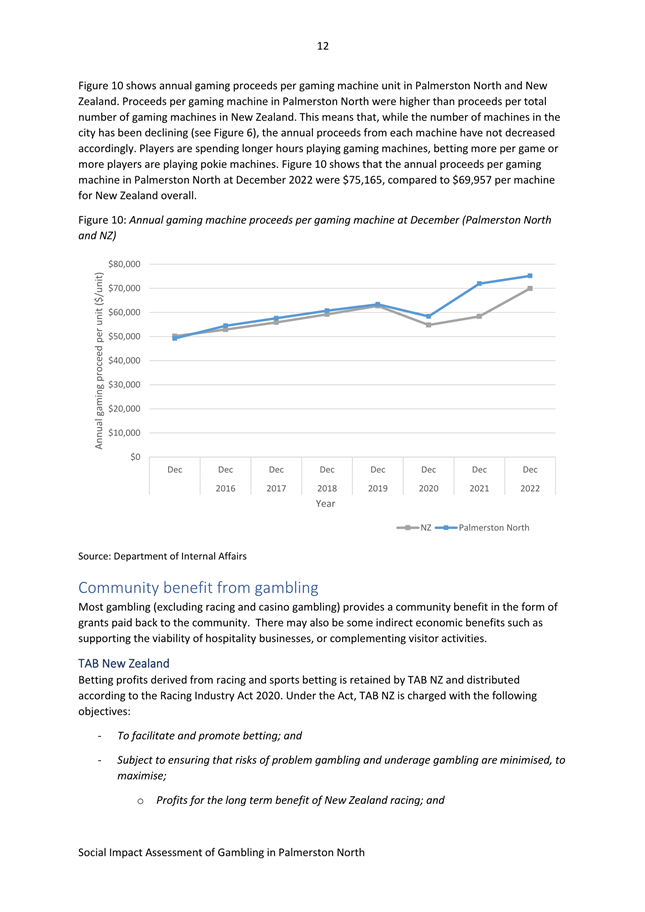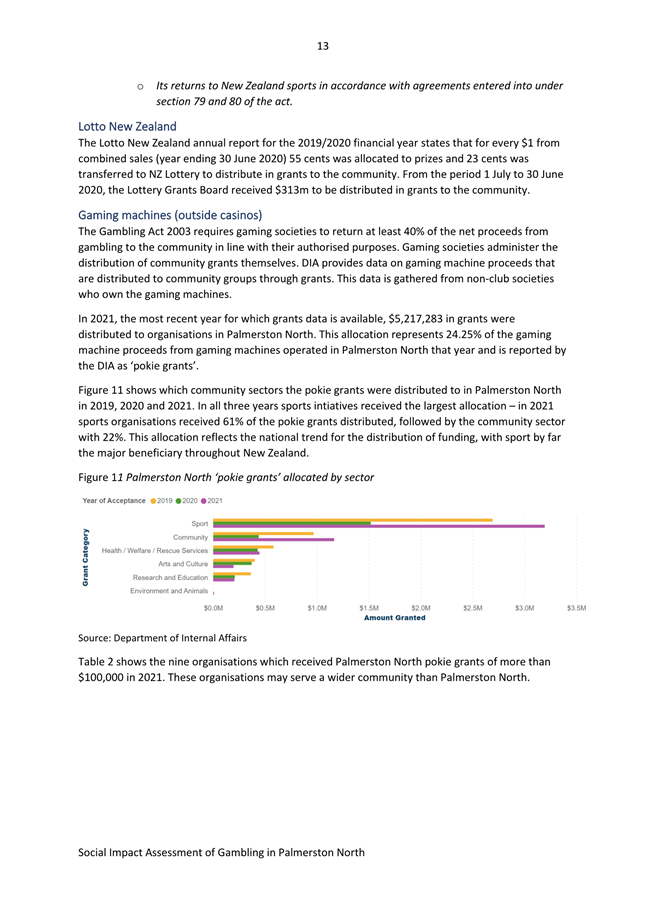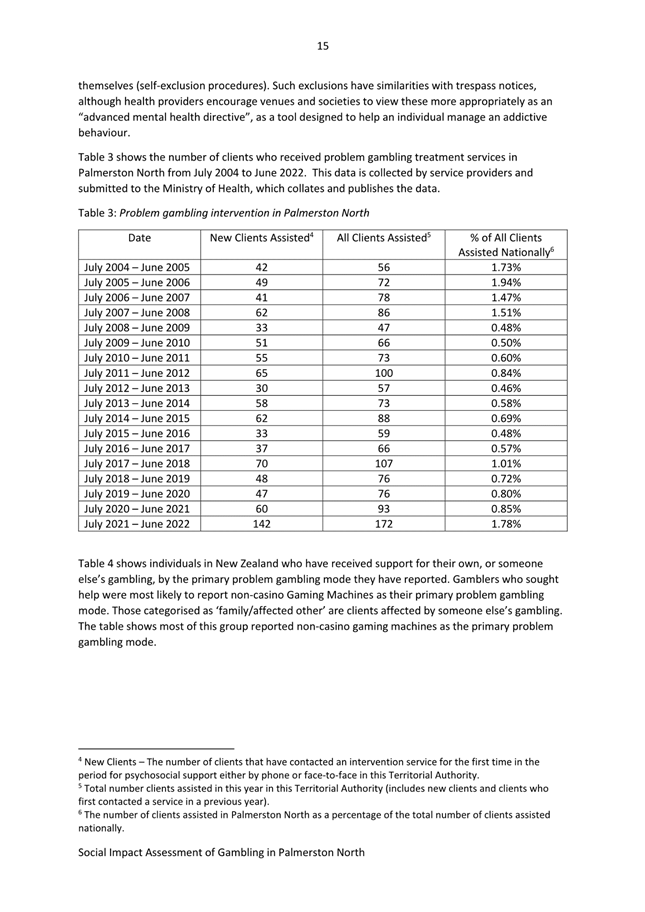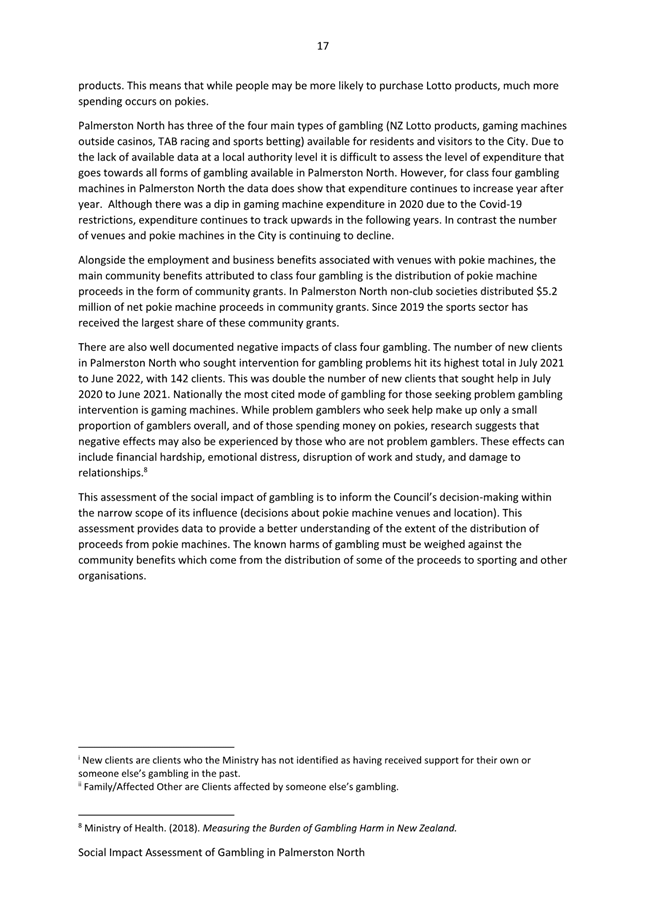|
Lorna
Johnson (Chair)
|
|
Patrick
Handcock (Deputy Chair)
|
|
Grant
Smith (The Mayor)
|
|
Brent
Barrett
|
Orphée
Mickalad
|
|
Rachel
Bowen
|
Karen
Naylor
|
|
Lew
Findlay (QSM)
|
William
Wood
|
|
Billy
Meehan
|
Kaydee
Zabelin
|
Community Committee MEETING
24 May 2023
Order of Business
1. Karakia
Timatanga
2. Apologies
3. Notification
of Additional Items
Pursuant to Sections 46A(7) and
46A(7A) of the Local Government Official Information and Meetings Act 1987, to
receive the Chairperson’s explanation that specified item(s), which do
not appear on the Agenda of this meeting and/or the meeting to be held with the
public excluded, will be discussed.
Any additions in accordance with
Section 46A(7) must be approved by resolution with an explanation as to why
they cannot be delayed until a future meeting.
Any additions in accordance with
Section 46A(7A) may be received or referred to a subsequent meeting for further
discussion. No resolution, decision or recommendation can be made in
respect of a minor item.
4. Declarations
of Interest (if any)
Members are reminded of their duty
to give a general notice of any interest of items to be considered on this
agenda and the need to declare these interests.
5. Public
Comment
To receive comments from members of
the public on matters specified on this Agenda or, if time permits, on other
Committee matters.
(NOTE: If
the Committee wishes to consider or discuss any issue raised that is not
specified on the Agenda, other than to receive the comment made or refer it to
the Chief Executive, then a resolution will need to be made in accordance with
clause 2 above.)
6. Presentation
- Grey Power Manawatū Page 7
7. Presentation
- Nuivaka Trust Introduction Page 9
8. Presentation
- Te Pū Harakeke - Social Wellbeing Forum 2022 Report Page 11
9. Confirmation
of Minutes Page 73
“That the minutes of the Community Committee meeting
of 15 March 2023 Part I Public be confirmed as a true and correct
record.”
10. Age Friendly status
and funding Page 79
Memorandum, presented by Martin Brady, Community
Development Advisor and Stephanie Velvin, Community Development Manager.
11. Development Subsidy
request from the Methodist Church of New Zealand Te Haahi Weteriana o
Aotearoa Manawatū Rangitīkei Methodist Parish Page 87
Memorandum, presented by Stephanie Velvin, Community
Development Manager.
12. Community Places
Stocktake and Needs Assessment - timeframes and resource requirements to give
effect to the recommendations. Page 97
Memorandum, presented by Stacey Solomon, Policy
Analyst.
13. Draft Gambling
Venue Policies - Approval to Consult Page 109
Report, presented by Julie Macdonald, Strategy &
Policy Manager.
14. Committee Work Schedule
- May 2023 Page 149
15. Karakia
Whakamutunga
16. Exclusion of Public
|
|
To be
moved:
“That the
public be excluded from the following parts of the proceedings of this
meeting listed in the table below.
The general
subject of each matter to be considered while the public is excluded, the
reason for passing this resolution in relation to each matter, and the
specific grounds under Section 48(1) of the Local Government Official
Information and Meetings Act 1987 for the passing of this resolution are as
follows:
|
General subject of each matter to be
considered
|
Reason for passing this resolution in
relation to each matter
|
Ground(s) under Section 48(1) for
passing this resolution
|
|
|
|
|
|
|
|
|
|
This
resolution is made in reliance on Section 48(1)(a) of the Local Government
Official Information and Meetings Act 1987 and the particular interest or
interests protected by Section 6 or Section 7 of that Act which would be
prejudiced by the holding of the whole or the relevant part of the
proceedings of the meeting in public as stated in the above table.
Also that the
persons listed below be permitted to remain after the public has been
excluded for the reasons stated.
[Add Third
Parties], because of their knowledge and ability to assist the
meeting in speaking to their report/s [or other matters as specified] and
answering questions, noting that such person/s will be present at the meeting
only for the items that relate to their respective report/s [or matters as
specified].
|
Presentation
TO: Community
Committee
MEETING DATE: 24
May 2023
TITLE: Presentation
- Grey Power Manawatū
RECOMMENDATION TO Community Committee
1. That the
Community Committee receive the presentation for information.
Lew Findlay, the President of Grey Power Manawatū, will present on extending the Gold Power Parking in
Palmerston North.
Attachments
Nil
Presentation
TO: Community
Committee
MEETING DATE: 24
May 2023
TITLE: Presentation
- Nuivaka Trust Introduction
RECOMMENDATION TO Community Committee
1. That the
Community Committee receive the presentation for information.
Dana Kunaiti (General Manager) and Daniel Lose (Chair) of
Niuvaka Trust will be presenting as a Pasifika Community Provider. The
presentation will cover the current services the Trust provides and its
strategic direction moving forward.
Attachments
Nil
Presentation
TO: Community
Committee
MEETING DATE: 24
May 2023
TITLE: Presentation
- Te Pū Harakeke - Social Wellbeing Forum 2022 Report
RECOMMENDATION TO Community Committee
1. That the
Community Committee receive the presentation for information.
Tim Kendrew, Manager of Te Pū Harakeke will present the
‘Social Wellbeing Forum 2022 Report’.
Attachments
|
1.
|
Social
Wellbeing Forum 2022 Report ⇩ 
|
|
Palmerston North City Council
Minutes of
the Community Committee Meeting Part I Public, held in the Council Chamber,
First Floor, Civic Administration Building, 32 The Square, Palmerston North on 15 March 2023,
commencing at 1:00pm.
|
Members
Present:
|
Councillor Lorna Johnson (in the Chair),
The Mayor (Grant Smith) and Councillors Patrick Handcock, Brent Barrett,
Rachel Bowen, Lew Findlay, Billy Meehan, Orphée Mickalad, Karen
Naylor, William Wood and Kaydee Zabelin.
|
|
Non Members:
|
Councillors Mark Arnott, Vaughan Dennison,
Roly Fitzgerald, Leonie Hapeta and Debi Marshall-Lobb.
|
|
Apologies:
|
The Mayor (Grant Smith) (early departure
on Council business).
|
Councillor Debi Marshall-Lobb left
the meeting at 1.52pm at the conclusion of clause 2. She was not present
for clauses 2 to 11 inclusive.
The Mayor was not present when the
meeting resumed at 3.09pm. He was not present for clauses 5 to 11 inclusive.
Councillor Billy Meehan left the
meeting at 3.44pm at the conclusion of clause 6. He was not present for
clauses 7 to 11 inclusive.
Councillor Leonie
Hapeta left the meeting at 4.14pm at the conclusion of clause 8. She was
not present for clauses 9 to 11 inclusive.
Councillor Mark
Arnott left the meeting at 4.31pm at the conclusion of clause 9. He was
not present for clauses 10 and 11.
Councillor Lew
Findlay left the meeting at 4.45pm during consideration of clause 10. He
was not present during clause 11.
|
|
Karakia Timatanga
|
|
|
Councillor Lorna Johnson opened the
meeting with karakia.
|
|
|
Declarations of Interest
|
|
|
Councillor Vaughan Dennison declared an interest in Item
11: Annual Sector Lead Report: Housing Advice Centre (clause 8-23) but said
he would consider the Item with an open mind.
Councillor Roly Fitzgerald declared an interest in Item
13: Annual Sector Lead Report: Te Tihi o Ruahine Whānau Ora Alliance
(clause 7-23) but said he would consider the Item with an open mind.
|
|
1-23
|
Apologies
|
|
|
Moved
Lorna Johnson, seconded Patrick Handcock.
The COMMITTEE RESOLVED
1. That the
Committee receive the apologies.
|
|
|
Clause 1-23 above was
carried.
|
|
2-23
|
Pasifika Reference
Group - Annual Presentation
Presentation, by Andrew
Jamieson and Courtney Manu Co-Chairs of the Pasifika Reference Group.
The Reference Group is
working on establishing a voice in the community and their overall aim
includes promoting Pasifika to look after Pasifika.
He noted a lack of Pasifika
representation in Te Marae o Hine and around the city and suggested that this
inhibits Pasifika people to having a better connection with the city.
The Pasifika Reference Group
plans to promote the language and culture; develop a visual representation in
the city; investigate the development of a community hub including a Fale
Fono; investigate more housing opportunities for Pasifika, especially housing
opportunities outside of the 4412 post code; and aims to have a Pasifika
youth representation.
Courtney Manu stated that she
would like to see more housing opportunities outside of the 4412 for Pasifika
people.
|
|
|
Moved
Lorna Johnson, seconded Patrick Handcock.
The COMMITTEE RESOLVED
1. That the Committee receive the presentation for information.
|
|
|
Clause 2-23 above was
carried.
|
Councillor
Debbie Marshall-Lobb left the meeting at 1.52pm.
|
3-23
|
The Little Stars Programme:
Support for Children with Disabilities.
Presentation, by Jane
Carrigan, Independent Disability Advocate and Pip Cook, co-founder of The
Planet Ryan Family Foundation.
Jane Carrigan outlined the
funding model provided by the Mana Whaikaha (disability support) programme
which has attracted over 1000 people to Palmerston North. She said that while
it is an excellent funding model, it does not provide sufficient accessible
services. This is why Pip Cook established the Little Stars Centre, to
provide a programme that provides a more comprehensive service.
Jane introduced Julia and
Ryan who were in attendance at the meeting - both have disabilities and have
received the benefits from the programme which has made a tangible difference
in their lives.
They are looking for support
in partnering with Council to achieve more awareness and support for the
disability community.
|
|
|
Moved
Lorna Johnson, seconded Patrick Handcock.
The COMMITTEE RESOLVED
1. That the Committee receive the presentation for
information.
|
|
|
Clause 3-23 above was
carried.
|
|
4-23
|
Seniors Reference Group
- Annual Presentation
Presentation, by Jim
Jefferies, Chair of the Seniors Reference Group.
Jim Jefferies spoke on the
significance of the over 60s in Palmerston North who represent around 20% of
the population. He highlighted five areas that the Senior Reference Group is
interested in: housing, health, employment, financial, and social impacts.
The Reference Group would
like Palmerston North to become an Age Friendly city and obtain official
status as such. An additional motion was passed requesting the Chief
Executive investigate what is required to apply for the status and funding to
be an accredited Age Friendly city.
|
|
|
Moved
Lorna Johnson, seconded Lew Findlay.
The COMMITTEE RESOLVED
1. That the Community Committee
receive the presentation for information.
2. That the Chief Executive investigate what is required to apply for ‘Age
Friendly’ status and funding, and report back to the committee.
|
|
|
Clause 4-23 above was
carried.
|
The
meeting adjourned at 2.37pm.
The
meeting resumed at 3.09pm.
The
Mayor (Grant Smith) was not present when the meeting resumed at 3.09pm.
Reports
|
5-23
|
Annual Sector Lead Report:
Manawatū Multicultural Council
Memorandum, presented by
Stephanie Velvin, Community Development Manager and Nina Kirschbaum,
President of Manawatū Multicultural Council.
|
|
|
Moved
Lorna Johnson, seconded Patrick Handcock.
The COMMITTEE RESOLVED
1. That the
Committee receive the memorandum titled ‘Annual Sector Lead Report:
Manawatū Multicultural Council’ presented to the Community
Committee on 15 March 2023.
|
|
|
Clause 5-23 above was
carried.
|
|
6-23
|
Annual Sector Lead Report: Te
Pū Harakeke - Community Collective Manawatū
Memorandum, presented by
Stephanie Velvin, Community Development Manager, and Tim Kendrew, Manager of Te
Pū Harakeke - Community Collective Manawatū.
|
|
|
Moved
Lorna Johnson, seconded Patrick Handcock.
The COMMITTEE RESOLVED
1. That the
Committee receive the memorandum titled ‘Annual Sector Lead Report: Te Pū Harakeke – Community Collective’ presented to the Community Committee on 15 March
2023.
|
|
|
Clause 6-23 above was
carried.
|
Councillor
Billy Meehan left the meeting at 3.44pm.
|
7-23
|
Annual Sector Lead Report: Te
Tihi o Ruahine Whānau Ora Alliance
Memorandum, presented by
Stephanie Velvin, Community Development Manager, Materoa Mar, Chief Executive
and Stacey Seravatu Project Manager from Te Tihi o Ruahine Whānau Ora
Alliance.
|
|
|
Moved
Lorna Johnson, seconded Patrick Handcock.
The COMMITTEE RESOLVED
1. That the Committee receive the memorandum titled
‘Annual Sector Lead Report: Te Tihi o Ruahine Whānau Ora
Alliance’ presented to the Community Committee on 15 March 2023.
|
|
|
Clause 7-23 above was
carried.
|
|
8-23
|
Annual Sector Lead Report:
Housing Advice Centre
Memorandum, presented by
Stephanie Velvin, Community Development Manager and Peter Grey, Committee
Chair of Housing Advice Centre.
|
|
|
Moved
Lorna Johnson, seconded Patrick Handcock.
The COMMITTEE RESOLVED
1. That the
Committee receive the memorandum titled ‘Annual Sector Lead Report:
Housing Advice Centre’ presented to the Community Committee on 15 March
2023.
|
|
|
Clause 8-23 above was
carried.
|
Councillor Leonie Hapeta left at 4.14pm.
|
9-23
|
Welcoming Communities Annual
Update
Memorandum, presented by
Stephanie Velvin, Community Development Manager and Somayyeh Ghaffari,
Community Development Advisor.
|
|
|
Moved
Lorna Johnson, seconded Patrick Handcock.
The COMMITTEE RESOLVED
1. That the
Committee receive the memorandum titled ‘Welcoming Communities Annual
Update’ presented to the Community Committee on 15 March 2023.
|
|
|
Clause 9-23 above was
carried.
|
Councillor
Mark Arnott left at 4.31pm.
|
10-23
|
Update on Response to Homelessness
Memorandum, presented by
Stephanie Velvin, Community Development Manager
Councillor Lew Findlay left at 4.45pm.
|
|
|
Moved
Lorna Johnson, seconded Patrick Handcock.
The COMMITTEE RESOLVED
1. That the
Committee receive the memorandum titled ‘Update on Response to
Homelessness’ presented to the Community Committee on 15 March 2023.
|
|
|
Clause 10-23 above was
carried with 1 abstention.
|
|
11-23
|
Committee Work Schedule
An additional motion was passed
requesting the Chief Executive report back on progress made on the social
housing budget in November 2023.
|
|
|
Moved
Lorna Johnson, seconded Patrick Handcock.
The COMMITTEE RESOLVED
1. That the Community Committee receive their work
schedule for March 2023.
2. That
the Chief Executive report back on progress made on the social housing budget
in November 2023.
|
|
|
Clause 11-23 above was
carried.
|
|
|
Karakia
Whakamutunga
|
|
|
Councillor
Lorna Johnson closed the meeting with karakia.
|
The meeting
finished at 4.56pm.
Confirmed 24 May 2023
Chair
Memorandum
TO: Community
Committee
MEETING DATE: 24
May 2023
TITLE: Age
Friendly status and funding
Presented
By: Martin
Brady, Community Development Advisor and Stephanie Velvin, Community
Development Manager
APPROVED BY: Chris
Dyhrberg, Chief Customer Officer
RECOMMENDATION TO Community Committee
1. That the
Committee receive the report titled ‘Age Friendly status and
funding’ presented to the Community Committee on 24 May 2023.
1. ISSUE
1.1 This report is a response
to the Community Committee’s resolution on 15 March 2023 that the
Chief Executive investigate what is required to apply
for Age Friendly status and funding, and report back to the committee.
2. BACKGROUND
2.1 On 14 September 2022, Age
Friendly Palmerston North made a presentation to the Community Development
Committee to request that Council agree to commence the process of becoming an
Age Friendly City as soon as possible, by allocating resource either via the
next Annual Plan or Long-Term Plan.
2.2 As a result, the Committee
resolved that the request be referred to the Long-Term Plan process.
2.3 On 15 March 2023, at the
Community Committee meeting, Council's Seniors’ Reference Group
highlighted its support for the city pursuing Age Friendly status during its
annual presentation.
2.4 As a result, the Committee
resolved that the Chief Executive investigate what is required to apply for Age
Friendly status and funding, and report back to the committee.
3. AGE FRIENDLY MEMBERSHIP
3.1 Becoming Age Friendly does
not involve the achievement of a status, rather it includes a commitment,
process and membership. There
is no end date as such, as the process would be ongoing.
3.2 There are two levels of
Age Friendly membership available to seek:
a. Age Friendly Aotearoa
New Zealand (AFANZ), which is a national network open to Councils, facilitated
by the Office for Seniors through the Ministry of Social Development; and
b. World Health Organisation’s (WHO) Age
Friendly Global Network Community, which is an international network
facilitated by the World Health Organisation open to public governing
bodies;
3.3 Both memberships are
joined through an online application process, which requires Council to
demonstrate a level of commitment to progressing towards age friendly outcomes.
There is no cost to join.
3.4 The AFANZ membership
provides a network of council professionals working in the New Zealand context,
and benefits include sharing of resources, ideas and experiences. There
are 24 councils who are current members of this network; see a list of these
appended to this report.
3.5 The WHO membership
provides an international network and has potential for recognition on a
greater scale, with broader ’communication power’ in terms of city
reputation. Member cities from New Zealand include Nelson, Auckland, Gore, New
Plymouth and Hamilton.
3.6 Both memberships promote a
framework of eight outcome areas to be considered when becoming an Age Friendly
City, including: Outdoor spaces and buildings; Transport; Housing; Social
participation; Respect and social inclusion; Civic participation and
employment; Communication and information; Community support and health
services.
3.7 Both memberships require
the council to formally commit to becoming an Age Friendly City, via a letter
from the Mayor or similar.
3.8 Additionally, membership
requirements for the WHO include:
a. Share and promote the
values and principles of the network (respect for diversity, equity, participation
and rights of older people) and to the process of creating more age-friendly
communities.
b. Commit to and implement the four steps to
create an Age Friendly local environment: engage and understand, plan, act and
measure.
c. Actively participate in the network. This
would include sharing of documentation developed (plans, monitoring reports
etc.), practices and updating a shared profile page.
3.9 For the AFANZ membership,
Council would be required to:
a. demonstrate that it is
taking credible and tangible steps towards developing an age friendly strategy
or action plan for their community.
b. be leading the Age Friendly strategy or plan
for their community.
3.10 The Office for Seniors
suggest the development of an Age Friendly strategy or plan is guided by the
following steps:
Step 1. Get started. Connect with
others, set up a steering group and check any funding that might be
available.
Step 2. Assess how age friendly
your community is. Before you can develop an age friendly plan, you need to
understand your community’s current situation.
Step 3. Develop a plan for
communities to work towards becoming age friendly. The plan should focus on
your own specific strengths, cultures, and needs.
Step 4. Implement the plan. With
the assessment and planning done, you can now start to implement your age
friendly actions.
Step 5. Evaluate your age friendly
programme. Evaluating the programme is key to understanding what’s
working well, what’s not, and what to focus on next.
3.11 The Office for Seniors
have staff and toolkit available to support council’s through this
process. View the toolkit here.
3.12 In summary, Council can
join either network, or both, and there are slightly different benefits offered
by each. Council would be eligible to join both membership networks with the
completion of the same process, therefore it is recommended that, if proceeding
with this area of work, Council joins both.
4. AGE FRIENDLY FUNDING
4.1 The Office for Seniors has
a fund available for the initial work of becoming an Age Friendly City. The
fund is currently closed and opens annually in August/September.
4.2 The fund supports
organisations with grants between $5,000 to $15,000. The funds may be used for
operational costs related to the development of a strategy or plan, and/or the
implementation of new projects or initiatives in support of an age friendly
strategy or plan.
4.3 Age Friendly Palmerston
North have also confirmed they have a small amount of money from fundraising
which could be used to support the process, for example contributing to the
hiring of a meeting venue or catering for a workshop.
5. FURTHER INVESTIGATION
5.1 In gathering the above
information, Council staff have engaged with and sought advice from Age
Friendly Palmerston North and the Office for Seniors – Ministry of Social
Development.
5.2 It is noted that Age
Friendly Palmerston North, which include representatives of community groups
who work with or represent older people, have done some initial work in
this area, including the development of a Palmerston North Age Friendly Strategy
2018-2021. Staff understand that the Strategy was not implemented in full due
to capacity constraints and the identification that Council commitment and
coordination was required. This Strategy will be a useful starting point for
further work.
5.3 Staff have also engaged
with New Plymouth City Council, Hamilton City Council and Tauranga City Council
who are all current or past members of both networks and have implemented the
Age Friendly process in their cities. Staff also reviewed age friendly strategies
developed by other councils, including that of Waimakariri District Council.
5.4 Based on these
investigations, staff understand that the memberships and subsequent process
will likely require resource of 0.5 FTE for a period of up to 12 months to
achieve the age friendly strategy or plan (steps 1-3 above), followed by
0.25-0.75 FTE ongoing to drive the implementation and evaluation of the
strategy or plan, depending on the content of the plan (steps 4 & 5 above).
5.5 Another finding of the
investigation was the importance of having operational budget available to
support the implementation of the age friendly strategy or plan. This enabled
councils to progress tangible outcomes within the plan in a timely manner and
maintain the trust and momentum developed with the community during the
development of the plan. Staff understand other councils have committed around
$30,000 per year for this purpose.
5.6 Some of the positive
outcomes other councils have mentioned as a result of their age friendly
membership and processes include stronger relationships and trust built with
their communities and improved awareness and focus within their council on the
needs of seniors.
5.7 Lessons learned from these
engagements include that having a strategy or plan which is tangible,
deliverable and well-resourced is key, and having a range of key community
leaders included in the process is important.
5.8 Given
the information gathered, if Council wishes to proceed with the Age
Friendly membership/s and process, additional operational budget of $50,000
is required to resource the 0.5 FTE and associated expenses in the 2023/2024
annual budget.
5.9 A further programme for
the implementation of the Age Friendly strategy or plan could then be included
in the Long-Term Plan process.
6. NEXT STEPS
6.1 Should
councillors wish to further an Age Friendly strategy or plan and membership/s,
then the Committee would need to refer a programme to the annual budget
deliberations.
6.2 If the decision is made
through the annual budget to proceed with this work, staff would then do the
following:
6.2.1 Engage required staff, and
prepare and submit membership applications to the World Health Organisation and
Age Friendly Aotearoa New Zealand.
6.2.2 Commence a working group,
in partnership with Age Friendly Palmerston North, and proceed with the
recommended steps 1-5 as described at 3.10 above.
6.2.3 Apply for funding
through the Office for Seniors in August/September to help resource the initial
work.
7. Compliance and administration
|
Does the Committee have
delegated authority to decide?
|
Yes
|
|
Are the decisions significant?
|
No
|
|
If they are significant do they
affect land or a body of water?
|
No
|
|
Can this decision only be made
through a 10 Year Plan?
|
Yes
|
|
Does this decision require
consultation through the Special Consultative procedure?
|
No
|
|
Is there funding in the current
Annual Plan for these actions?
|
No
|
|
Are the recommendations
inconsistent with any of Council’s policies or plans?
|
No
|
|
|
|
The recommendations contribute
to Goal 3: A Connected and Safe Community
|
|
The recommendations contribute
to the achievement of action/actions in Connected
Communities
The action is: Build and
maintain relationships with local communities of identity, interest and place
to understand and support their strengths and aspirations
|
|
Contribution to strategic
direction and to social, economic, environmental and cultural well-being
|
Engaging in the Age Friendly
process towards the achievement of the eight age friendly outcome areas
aligns strongly with Council’s goals of being a connected and safe, and
growing and innovative community, and will have positive impacts for the
social and economic wellbeing of older people and the wider community.
|
|
|
|
Attachments
|
1.
|
List
of AFANZ Member Councils - March 2023 ⇩ 
|
|
Memorandum
TO: Community
Committee
MEETING DATE: 24
May 2023
TITLE: Development
Subsidy request from the Methodist Church of New Zealand Te Haahi Weteriana o
Aotearoa Manawatū Rangitīkei Methodist Parish
Presented
By: Stephanie
Velvin, Community Development Manager
APPROVED BY: Chris
Dyhrberg, Chief Customer Officer
RECOMMENDATION TO Council
1. That
Council approve a Development Subsidy of $13,000 for the Methodist Church of
New Zealand Te Haahi Weteriana o Aotearoa Manawatū Rangitīkei
Methodist Parish.
1. ISSUE
1.1 The
Development Subsidy is one of Council’s grant funding programmes. It is
designed to provide support to community groups that are undertaking
development of their facilities, where the payment of any of the following is
triggered:
· Development
contribution fee as per the Development Contribution Policy;
· Building
consent costs;
· Resource
consent costs.
1.2 In
the 2022/2023 Financial Year there is $20,000 in the Development Subsidy
programme budget; there have been no applications to this fund this year.
1.3 The
Support
and Funding Policy 2022 sets out the requirements for how Council’s
grant funding programmes will be allocated. Section 9 of the Policy stipulates
staff will assess applications to the Development Subsidy fund and make
allocation recommendations to the appropriate Council committee.
1.4 Staff
have received and assessed a Development Subsidy application from the Methodist
Church of New Zealand Te Haahi Weteriana o Aotearoa Manawatū
Rangitīkei Methodist Parish.
1.5 This
report provides a summary of the assessment and officer recommendation to the
Committee.
2. BACKGROUND
2.1 On
1 May 2023, the Methodist Church of New Zealand Te Haahi Weteriana o Aotearoa
Manawatū Rangitīkei Methodist Parish (the Manawatū
Rangitīkei Parish) submitted an application for a development subsidy
towards building consent costs related to work at 264 Broadway Avenue.
2.2 The
legal title for the land at 264 Broadway Avenue is held by the Methodist Church
of New Zealand, with the Manawatū Rangitīkei Parish & Tongan
Methodist Parish having joint management of the property. The Parishes have
been undertaking development of this property to create an extended lobby
space, with new bathrooms and frontage of the building. Attachment 1 shows the
concept plans.
2.3 This
development has required a building consent, and thus building consent fees
have been incurred by the group. The total amount invoiced for this building
consent was just over $16,000.
2.4 On
receipt of the Development Subsidy application, staff conducted an assessment
against the eligibility criteria and support priorities for the fund, which are
also set out in Section 9 of the Support and Funding Policy.
2.5 A
summary of the assessment follows:
|
Eligibility criteria
|
Comment
|
Met? (Y/N)
|
|
Applicant
is an eligible community group (charitable trust, incorporated society or
social enterprise)
|
Applicant is a registered
charity, verified on the Charities
Register
|
Yes
|
|
The
community group is based in Palmerston North
|
Yes,
based in central city.
|
Yes
|
|
The
services or activities of this community group primarily benefit Palmerston
North residents
|
Satisfied that the building
will primarily be used by Palmerston North residents.
|
Yes
|
|
The
community group owns the land, building or facility which is the subject of
the development subsidy, resource consent or building consent
|
As explained at 2.2 above.
Staff are satisfied that the intent of this criteria is sufficiently met.
|
Yes
|
|
The
land, building or facility which is the subject of the development subsidy,
resource consent or building consent is integral to the community group's
operations
|
The building subject to the
building consent is the main building for their activities. It is noted that
the work is to extend the lobby space, bathrooms and frontage rather than the
main hall/facility.
|
Yes
|
|
Acceptable
statement of financial position
|
Balance sheets viewed for
both parishes, and viewed annual return for the Methodist Church of New
Zealand. No concerns.
|
Yes
|
|
Acceptable
support and funding history with Council
|
Have received rates rebates
for this property previously. No concerns.
|
Yes
|
|
Support priorities
|
Comment
|
Extent of alignment with
support priorities (scale 1-5)
|
|
Development
is or will be delivering community outcomes that contribute to goal 2, 3
and/or 4 of Council’s strategic direction.
|
Staff
view that the services and activities which will occur at the building will
deliver towards Goal 3: A Connected and Safe Community, particularly Priority
1 'Develop, provide, support or advocate for services, facilities, and events
that create a connected, welcoming and inclusive community' and Priority 3
'Support communities to achieve their aspirations'.
The
activities described by the applicant will benefit a range of priority
communities, including Pasifika, older people, younger people and people with
disabilities. While religious activities will be the primary purpose, it is
understood that this building will be used regularly for a range of broader
community activities, including general community hire, which will improve
community connections, inclusion and overall wellbeing.
|
1 = very little
2 = little
3 = moderate
4 = strong
5 = very strong
|
2.6 Given
the above assessment, staff are recommending a Development Subsidy of $13,000
is funded, or 80% of their costs. This recommendation has taken into
consideration the strength of alignment with support priorities for this fund,
and the amount remaining in the fund.
3. NEXT STEPS
3.1 Staff
will communicate the outcome of Council’s decision to the applicant.
3.2 If
approved, the funds will be paid to the applicant as soon as possible, using
budget from the 2022/2023 financial year.
4. Compliance and administration
|
Does the Committee have
delegated authority to decide?
If Yes quote relevant clause(s)
from Delegations Manual
|
No
|
|
Are the decisions significant?
|
No
|
|
If they are significant do they
affect land or a body of water?
|
No
|
|
Can this decision only be made
through a 10 Year Plan?
|
No
|
|
Does this decision require consultation
through the Special Consultative procedure?
|
No
|
|
Is there funding in the current
Annual Plan for these actions?
|
Yes
|
|
Are the recommendations
inconsistent with any of Council’s policies or plans?
|
No
|
|
The recommendations contribute
to Goal 3: A Connected and Safe Community
|
|
The recommendations contribute
to the achievement of action/actions in Connected
Communities
The action is: Administer grants
in line with the community funding policy
|
|
Contribution to strategic
direction and to social, economic, environmental and cultural well-being
|
Staff
view that the services and activities which will occur at the building will
deliver towards Goal 3: A Connected and Safe Community, particularly Priority
1 'Develop, provide, support or advocate for services, facilities, and events
that create a connected, welcoming and inclusive community' and Priority 3
'Support communities to achieve their aspirations'.
Contributes to social, economic
and cultural wellbeing.
|
|
|
|
Attachments
|
1.
|
Alteration
Plans ⇩ 
|
|
|
2.
|
Confirmation
Letter ⇩ 
|
|
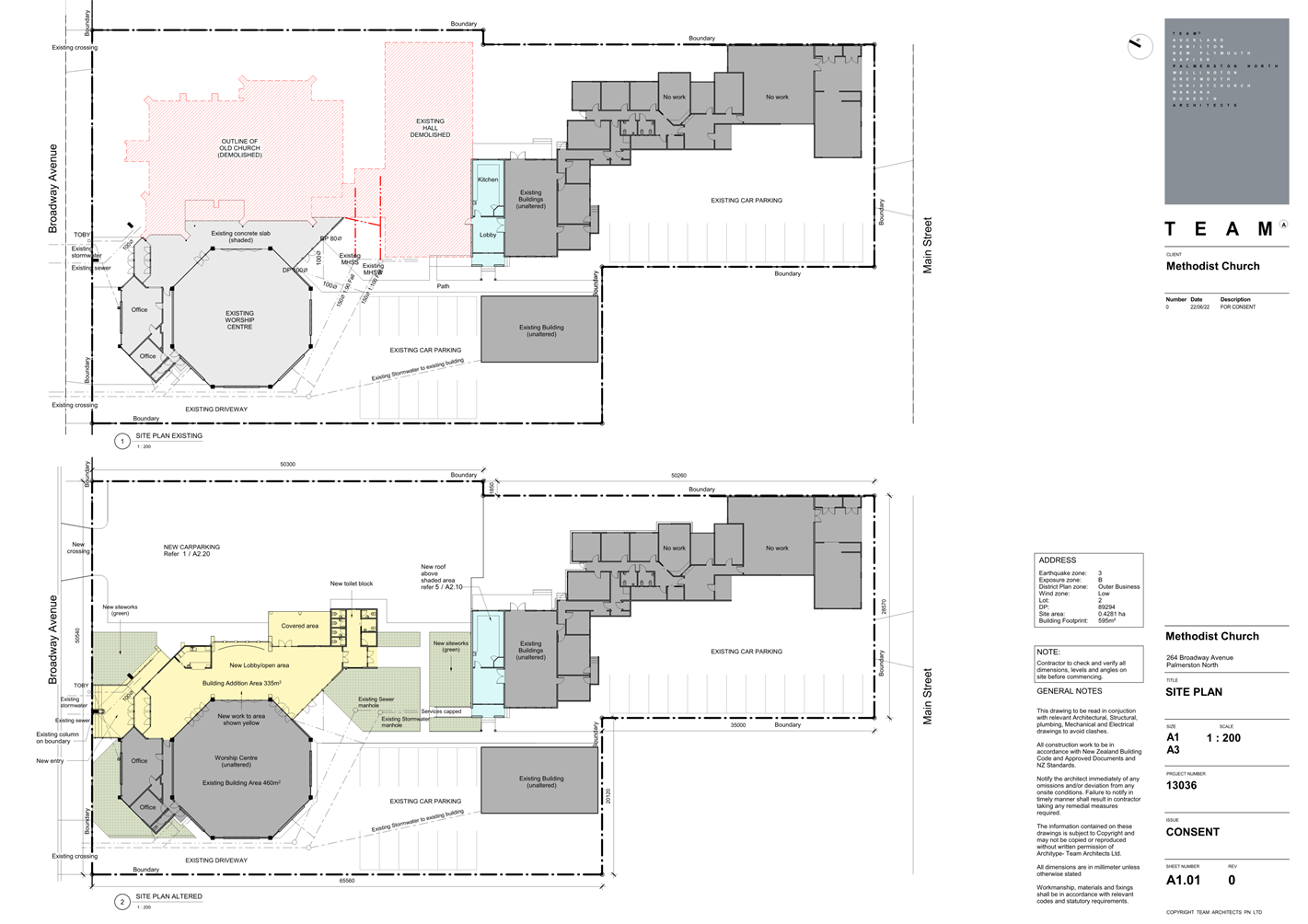
Memorandum
TO: Community
Committee
MEETING DATE: 24
May 2023
TITLE: Community Places Stocktake and Needs Assessment -
timeframes and resource requirements to give effect to the recommendations.
Presented
By: Stacey
Solomon, Policy Analyst
APPROVED BY: David
Murphy, Chief Planning Officer
RECOMMENDATIONS TO
Community Committee
1. That the
Committee receive the report titled “Community Places Stocktake and Needs
Assessment - timeframes and resource requirements to give effect to the
recommendations.” dated 24 May 2023.
1. ISSUE
In September 2022 the Community
Development Committee received the Community Places Research Report
(“Community Places”), attached to the memorandum titled “Presentation
of Community Places Research Report and Recommendations”. The
Committee recommended:
28-22 (2) That the Council endorses the recommendations
made in the Community Places Stocktake and Needs Assessment as guidance for
future decision-making on community facilities in Palmerston North.
The Committee resolved:
28-22 (3) That the Chief Executive report on timeframes
and resource requirements to give effect to the recommendations in the
Community Places Stocktake and Needs Assessment.
This memorandum responds to
resolution 28-22(3), providing the requested information.
The full Community
Places report is available on the Council website.
The associated
maps (linked in the full Community Places report) are also available to
view.
2. BACKGROUND
Over the last decade, Council
has received various requests related to Community Facilities. To respond to
these requests in a coordinated way, a stocktake of community facilities and a
needs assessment of the community was commissioned as part of the 2021-31 Long
Term Plan. Community Places is the resulting piece of research.
Stocktake
The stocktake provides important information about all
currently available community facilities in the city (Council owned or
otherwise). This is useful for understanding the capacity and availability of
facilities, as well as identifying possible opportunities for partnership with
facility providers, managers, and users.
Needs assessment
The needs assessment considered availability, accessibility,
and condition of community facilities against the forecasted growth and change
in community demand for these. The needs assessment combines information
obtained during engagement, interviews, and demographic analysis.
Findings from Community Places
relate to:
· Spread
of community facilities.
· Existing
community centres.
· Coverage
considerations.
· Projected
urban growth and provision of community facilities.
· Understanding
socio-economic aspects of growth.
· Important
factors for successful community facilities.
3. current Implementation of community places
Community Places consists of two parts, being the stocktake
and the needs assessment. These are informative pieces of work when considered
together, however both parts of the work are valuable as standalone pieces of
research too. The findings of Community Places are already being used to inform
planning and decision making.
Example: Contextual linkages
Community Places has been used to provide contextual
linkages for a number of other community facility assessments, including: the
Regional Sports Facility Plan (RSFP), work on the aquatics facilities and water
based recreation needs assessment, previous decision making on the future use
of Panako Park Hall, and work on the feasibility assessments for a covered bowling
green.
Example: Adderstone Reserve decision
Community Places informed part of the decision of the
Strategy and Finance Committee in March 2023 in their consideration of the
report “Adderstone
Reserve – decision on proposal to change part to housing”.
The original proposal consulted on with the community was to
change the use, or partially dispose of, some of the land reserved within
Adderstone for housing. The proposal was driven by the need to give certainty
to the structure planning for Aokautere.
Information from the Community Places report contributed (in
part) to a change in position and subsequent recommendation to the Committee to
retain the reserve in its entirety. The needs assessment found that there was a
good amount of green space but an under-supply of community facility provision
in Aokautere. The advice given was the Council could future-proof amenity for
the Aokautere community by retaining the land as reserve. The Council
could then reconsider a change in use of the reserve in future when the need of
the community was better understood.
Example: guidance provided to Kāinga Ora
Community Places has also been used to provide informal
guidance to Kāinga Ora in respect of their decision making on proposed
community spaces in their upcoming developments.
Community Places identified a
good range and number of facilities (Council owned, and non-Council owned)
available for public use around Palmerston North. Guidance provided to
Kāinga Ora was that, based on the stocktake and needs assessment, consideration
should be given to spaces and facilities which are already nearby to the
proposed developments. The facilities could be optimised for use to complement
the green spaces and community spaces being proposed by Kāinga Ora.
Partnerships with nearby facility providers could also be considered,
furthering the opportunity of the community to access resources which already
exist but are underutilised generally, or at a specific time.
4. Recommendations from Community Places
Community Places made 17
separate recommendations. The recommendations broadly fall into the following
themes:
· Maximising
use of current facilities.
o Palmerston
North has a good range of facilities available across the city.
o Provision
could be improved so that existing facilities can better support communities
now.
· Planning
sustainably for provision of facilities in growth areas to meet future need.
o Population-based
provision of community facilities is useful but cannot always anticipate future
need accurately.
o In
growth areas, Council could choose to set aside resource for community facility
(such as land) and then build the facility later, when the need of the
community is better understood.
· Determining
a policy for the provision of community facilities to enable responsive
decision-making.
o A
decision-making framework, internal process, or policy.
Assessment of
recommendations
To respond to the resolution of
the Committee, an assessment of the timeframes and resources required to
realise the recommendations of Community Places has been completed.
Completed recommendations
The following recommendation is
noted as already having been delivered (Table 1, below).
|
#
|
Recommendation
|
Comments
|
|
3
|
To meet the needs
identified in existing areas Council should:
Establish city wide
community facility booking systems.
|
A city wide booking system is in place. The
use of the system varies between Community Centre’s and facilities.
No further resource is required for this
recommendation.
|
Table
1: Recommendations which have already been realised
Recommendations which are in
progress
A number of recommendations
from Community Places were already programmed through the Long Term Plan
2021-31 or form a part of a larger piece of work that the Council undertakes.
These recommendations are noted in Table 2:
|
#
|
Recommendation
|
Comments
|
|
7
|
To meet the needs
identified in existing areas Council should:
Undertake a detailed review of existing community
centres to determine and address issues noted about availability,
accessibility, suitability and management, and the stakeholder engagement
findings.
|
Accessibility and
suitability
Long Term Plan 2021-31 Programme 2041
‘Property – Accessibility of Council Facilities’ budgeted
$100,000 in 2021/22 financial year to complete an accessibility audit.
The final report on the accessibility audit and survey for Community Centres
is due in June 2023. All other Council buildings are being assessed and
surveyed, with an anticipated completion date in August/September 2023.
Once all sites are assessed and surveyed,
non-compliant elements will be fed into a programme of work with three
priorities:
Priority A: urgent works: as such should be
implemented as soon as possible.
Priority B: medium-term works: including adaption
and improvement, as such should be implemented in line with renovations to
existing buildings or grounds.
Priority C: major works: building and ground
improvement/ long term priorities, as such should be implemented in line with major
works to existing buildings or grounds.
The outcome of the accessibility assessment will be
rolled into the continued maintenance programme for Community Centres and
other Council facilities.
Availability and management
Community Centre Management Agreements have recently
been reviewed to strengthen their alignment with the Council’s
aspirations for Community Centres to be places that create a sense of
community ownership and inclusion.
The review of the management contracts identified a
need to make the agreements more outcomes focussed. The agreements provide
clarity on the role of the management committees, reporting requirements, and
financial components.
No further resource is required for this
recommendation.
|
Table
2: Recommendations which are in progress
Recommendations that are
ongoing
A number of recommendations
from Community Places have been identified as ongoing. This is because they
form a part of a larger process, or because they are already given effect to
and are part of an ongoing process. These recommendations are noted in Table
3:
|
#
|
Recommendation
|
Comments
|
|
1
|
To meet the needs identified in existing areas Council should:
Maximise the use of
existing facilities e.g. promotion, use analysis, access audit etc.
|
Community Places found that many of the community
facilities around the city are over-subscribed during peak hours, and
under-subscribed during work/school-hours.
We measure the utilisation of our community centres
as part of our non-financial annual reporting. Our narrative measure outlines our success against this target based
on the different users, and uses, of community centres. We are currently
meeting our targets, as noted in our quarterly reports.
Many community centres are being used for regular
group bookings, or for social functions. In future, there may be an
opportunity to maximise the use of community centres by enabling multi-use
recreational use.
This recommendation relates to recommendations 2 and
7.
This recommendation is ongoing. No further resource
is required at this time.
|
|
2
|
To meet the needs identified in existing areas Council should:
Ensure community facilities
have equipment and technology that meets user needs.
|
A series of operational items from community centre
/ facility managers that was collated as part of the Community Places
engagement was provided by the consultants. Staff have been working through
these requested actions, many of which relate to this recommendation and
ensuring that community centres have the necessary provision to meet the
needs of users.
The Council reported through the Annual Report
2021/2022 on its target (narrative measure) for supporting community centre
management groups to provide community centres that are responsive to the
needs of their communities. The Council reported Community centres continue
to be well utilised by both regular and casual user groups, including hobby
groups, ethnic groups, religious groups, corporate bookings, and individual
community members booking for celebrations.
Requests for resources and resource requirements are
continuously monitored.
This recommendation is ongoing and can be considered
on an as-needed basis.
|
|
4
|
To meet the needs in
recent and future growth areas Council should:
Explore partnerships with community facility owners
in areas of the city where provision is low or non-existent.
|
Recommendations 4, 11, and
17 relate to the ways in which Council might partner with others, maximising the use of
current facilities.
This recommendation is ongoing and considered on an
as-needed basis. The completed stocktake will provide a useful basis
for this going forward. No further resources are required.
|
|
8
|
To meet the needs regarding the location of
community facilities Council should:
Determine the planning basis for the provision of
community facilities and include consideration of location and/or the
intended community of interest to be served by the community facility.
|
Recommendation 8 closely overlaps with
recommendations 9, 10, and 13.
The standalone needs-assessment of Community Places
provides a sound overview of the current and expected socioeconomic character
of Palmerston North. This can be used in addition to the below mentioned
tools to inform further analysis as part of the Council’s urban growth
planning.
We currently utilise a combination of social impact
assessments, and/or recreational needs assessments, and/or local business
centre assessments to inform, in part, our community facility provision.
This recommendation is ongoing, no further resources
are required.
|
|
9
|
To meet the needs
regarding the location of community facilities Council should:
Take a city-wide approach
to providing for the needs of less mobile people in the redevelopment or
planning of new community facilities.
|
Recommendation 9 closely overlaps with
recommendations 8, 10, and 13.
The needs assessment completed for the Community
Places has identified that mobility is an important factor in the ability of
the community to access facilities.
Recommendation 9 will be given effect to in, and
inform part of, the consideration for recommendations 5, 6, and
14.
This recommendation does not require further
resources.
|
|
10
|
To meet the needs
regarding the provision of community facilities Council should:
Include the provision of community facilities when
developing urban growth areas.
|
Recommendation 10 closely overlaps with
recommendations 8, 9, and 13.
Consideration is given to community facilities as
part of our urban growth planning. The determination of the provision
of community facilities is however not guaranteed e.g.: if an urban growth
area is of a small scale and is located near a an already existing facility
that is accessible and has availability, provision may already exist and
therefore not be required.
Recommendations 5, 6, and 14 (included in Table 4,
below) will inform this recommendation further.
This recommendation is ongoing, no further resources
are required.
|
|
11
|
To meet the needs
regarding the provision of community facilities Council should:
Ensure opportunities for partnerships regarding the
provision of community facilities are explored as part of urban growth
planning.
|
This recommendation can be included as part of the
development of planning guidelines which are proposed in recommendations 5
and 6.
This recommendation does not require further
resources.
|
|
12
|
To meet the needs
regarding the provision of community facilities Council should:
Identify community facilities as early as
practicably possible in the planning for new growth areas to enable Council
to collect Development Contributions for the construction of community
facilities.
|
The Development Contributions policy currently makes
accommodation for community facilities. Any community facility that provides
use for growth can be funded (fully or partially) via a development
contribution. The process is that a community facility is identified in a
capital programme, and for an asset manager to identify the growth component
for that facility.
The growth cost is then incorporated into the
development contribution fee that all residential development pays for.
The Development Contributions Policy is being
reviewed in 2023/24, alongside the preparation of the Long Term Plan 2024.
Further consideration of community facilities in the Policy may be made as
part of that review process and will be informed by decisions made on
the Long Term Plan.
This recommendation does not require further
resources.
|
|
13
|
To meet the needs
regarding the provision of community facilities Council should:
Include socio-economic analysis as part of the
planning for urban growth areas, including the requirements for community
facilities.
|
Recommendation 13 closely overlaps with
recommendations 8, 9, and 10.
The standalone needs-assessment of Community Places
provides a sound overview of the current and expected socio-economic
character of Palmerston North. This can be used to inform further analysis as
part of the Council’s urban growth planning.
This recommendation is ongoing, no further resources
are required.
|
Table
3: Recommendations that are ongoing
Recommendations that require
further work
The assessment concluded that
six recommendations require further work. The recommendations have logical
overlaps that make it sensible to address them concurrently or sequentially, or
have been identified as being able to be given effect to at a known time in the
future. Successfully addressing these recommendations will mean that subsequent
recommendations may also be achieved. These recommendations are noted in Table
4:
|
#
|
Recommendation
|
Comments
|
|
5
|
To meet the needs in
recent and future growth areas Council should:
Review the planning provisions for community
facilities in recent and future growth areas.
|
Recommendation 14 (below) will assist
with realising this recommendation.
This recommendation relates closely to
recommendation 6.
Recommendations 5 and 6 will be identified as
possible actions for consideration through the Long Term Plan.
|
|
6
|
To meet the needs
regarding the provision of community centres Council should:
Develop
planning guidelines for the provision of community centres in new and
existing areas.
|
There is currently no policy which guides
the Council’s response to community requests for the support or
development of community centres. This
is managed on a case-by-case basis through our usually planning.
This recommendation relates closely to
recommendation 5 (above). Recommendation
14 (below) will assist with realising this recommendation.
Recommendations 5 and 6 will be identified as
possible actions for consideration through the Long Term Plan.
|
|
14
|
To meet the needs of the community facility users
Council should:
Develop a needs-based decision-making framework
informed by the findings of this research to determine:
a) the provision of community facilities considering population
growth, communities of interest, socio-economic profiles, location etc and
b) operating models i.e. Council owned and run, owned and run by
others, private owned and Council run, private owned and Council support.
|
The value in realising this recommendation is in the
ability of it to inform, from a needs-based perspective, the strategic
alignment of the various planning and investment decisions of the Council.
By completing work this work, a number of other
recommendations which have been made through Community Places will be able to
be given effect to.
Work on this recommendation will be completed before
the end of 2023 as part of the Long Term Plan process.
This recommendation can be achieved within existing
resources and budget.
|
|
15
|
To meet the needs of the community facility users
Council should:
Use the outcomes of the
decision-making framework to inform Council’s Long Term plan.
|
Recommendation 14 will need to be completed before
recommendation 15 can be implemented.
This recommendation can be achieved within existing
resources and budget.
|
|
16
|
Considering the important factors that make a
‘successful community facility’
Undertake a detailed review of existing community facilities to
confirm the keys to success.
|
This recommendation relates closely to
recommendations 7 and 17. When the outcomes of the accessibility audit are
better known, a detailed review of existing community facilities can be
completed, and keys to success identified.
Council reports information through the Annual
Report and the Quarterly Reports which provide narrative feedback on the
current experience of community centres and facilities. At this time, the
Council is meeting its targets.
Recommendation 16 will be identified as a possible
action for consideration in the Long Term Plan.
|
|
17
|
Considering the important factors that make a
‘successful community facility’
Confirm Council’s role and the role of partners, in the support
of community facilities, including case studies, and collection and analysis
of user satisfaction data.
|
This recommendation has close links with recommendation
16 (above).
Once the recently reviewed Community Centre
Management Agreements have had an opportunity to entrench, a further, more
detailed review of the model, (including the role of the Council and of
Council’s partners) would be advised to ensure it is effective and
appropriate to achieving the goals of the community and the Council.
Recommendation 17 will be identified as a possible action for consideration
in the Long Term Plan.
|
Table
4: Recommendations that require further work
5. Conclusions
This memorandum responds to the
resolution of the committee and provides detail on the resource requirements
and timeframes for achieving the recommendations of the Community Places
report.
6. Next steps
Staff will continue to use the information contained in
Community Places to inform current work and work processes.
Staff propose further work be
completed on recommendations 5, 6, 14, 15, 16 and 17. This work
will be used to inform the Long Term Plan process.
7. Compliance and administration
|
Does the Committee have
delegated authority to decide?
|
Yes
|
|
Are the decisions significant?
|
No
|
|
If they are significant do they
affect land or a body of water?
|
No
|
|
Can this decision only be made through
a 10 Year Plan?
|
No
|
|
Does this decision require
consultation through the Special Consultative procedure?
|
No
|
|
Is there funding in the current
Annual Plan for these actions?
|
Yes
|
|
Are the recommendations
inconsistent with any of Council’s policies or plans?
|
No
|
|
The recommendations contribute
to Goal 3: A Connected and Safe Community
|
|
The recommendations contribute
to the achievement of action/actions in Connected
Communities
The action is: The Community
Places project contributes to several actions in the Council’s
Connected Communities Plan. In particular:
· Plan and provide
new community centres, libraries or hubs in accordance with city-wide needs
assessment and planning.
|
|
Contribution to strategic
direction and to social, economic, environmental and cultural well-being
|
The Community Places Stocktake
and Needs Assessment contributes to the Connected Communities Plan by:
· Supporting
communities to achieve their aspirations by enabling Council to plan for and create
community places and spaces that are fit for purpose, meet the needs of the
communities they serve, and are sustainably developed.
· Enabling
responsive decision-making of Council that anticipates and meets the needs of
the community now and in future.
|
|
|
|
Attachments
Nil
REPORT
TO: Community
Committee
MEETING DATE: 24
May 2023
TITLE: Draft
Gambling Venue Policies - Approval to Consult
PRESENTED BY: Julie
Macdonald, Strategy & Policy Manager
APPROVED BY: David
Murphy, Chief Planning Officer
RECOMMENDATION TO Community Committee
1. That the
Committee approve the Draft Gambling Venue Policies Statement of Proposal
(Attachment 1) for consultation.
Summary of options analysis for
draft Gambling venue policies – approval to consult
|
Problem
or Opportunity
|
Council
is required to review its gambling venue policies, which influence where
pokie machine and TAB venues may be established in the City.
Officers
have reviewed the policies and are now recommending improvements. Officers
seek approval by the Committee to consult on the draft Class Four Gambling
Venues Policy 2023 and the TAB Venues Policy 2023.
|
|
OPTION 1:
|
Approve the draft Gambling Venue Policies Statement
of Proposal for public consultation (Recommended)
|
|
Community Views
|
Early engagement with some
stakeholders has already happened. Most are aware of the policy review
cycle for local authority gambling venue policies, and the requirement for
local authorities to publicly consult when the policy comes up for review.
|
|
Benefits
|
Consulting on the draft
policies will provide Council with an opportunity to hear the views of the
community on the proposed changes.
|
|
Risks
|
No risks identified
with this option.
|
|
Financial
|
Consultation on the
draft policies can be managed within current budgets.
|
|
OPTION 2:
|
Do
not approve the draft Gambling Venue Policies Statement of Proposal for
public consultation
|
|
Community Views
|
Early engagement with
some stakeholders has already happened. Most are aware of the policy
review cycle for local authority gambling venue policies and expect to be
involved in the next stage of the review.
|
|
Benefits
|
No benefits identified
with this option.
|
|
Risks
|
The current policies
would remain unreviewed, and the Council would not be compliant with the
Gambling Act and Racing Industry Act.
|
|
Financial
|
There are no financial
risks associated with this option.
|
Rationale for the recommendations
1. Overview of the problem or opportunity
1.1 Through
the Gambling Act 2003 and the Racing Industry Act 2020, the Council is required
to have policies for whether and how we issue venue consents for class 4
gambling venues and TAB venues. We are also required to review those
policies within three years of the last review of those policies.
1.2 Both
policies were due to be reviewed in 2020 in line with the Gambling Act 2003 and
the Racing Industry Act 2020, however the review was delayed due to Covid-19.
The delay in the review of the policies does not affect the legality of the
policies, as they remain in effect until Council carries out a review to amend
or replace them.
1.3 This
report identifies the suggested changes to these policies and recommends that
the Council approves both draft policies for public consultation.
2. Background and previous council decisions
2.1 Council
adopted its first gambling venues policy in 2004 to meet its obligations under
the Gambling Act 2003 and the Racing Act 2003. The policy was subsequently
reviewed in 2005, 2008, 2012, and 2017.
2.2 This
report should be considered alongside the social impact assessment Gambling in
Palmerston North (Attachment 2). The Gambling Act 2003 and Racing Industry Act
2020 require the territorial authority, when adopting a gambling venue policy,
to consider the social impacts of gambling within the territorial authority
area. Neither of the Acts prescribe what elements should be included in a
social impact assessment, or how one should be carried out. Therefore, the
discretion in satisfying this part of the legislation rests with each
territorial authority.
3. Description of options
3.1 There
are two main options to consider. The first is to approve the draft gambling
venue policies for consultation. The second is to not approve the draft
gambling venue policies for consultation.
Option one – approve the draft gambling venue
policies for consultation
3.2 Option
one would enable staff to engage the community and key stakeholders on the
proposed changes to the gambling policies.
3.3 The
principal change proposed in the draft Class 4 Gambling Venue Policy is the introduction
of a “sinking lid” for class 4 gaming machines. If adopted, this
means that no consents would be issued for new venues or to increase the number
of gaming machines in an existing venue. There are also a number of
consequential amendments as a result of the introduction of the “sinking
lid” approach (for instance, the removal of the balloting process for
dealing with multiple applications on a single day).
3.4 Another
proposed change is rewording clause 4.3, which outlines the basis on which
consent would be granted for an existing venue to relocate to a new
location. The new wording is to provide greater clarity about when and
how this consent can be granted.
3.5 No
significant changes are proposed for the draft TAB Venue Policy. All the
proposed changes are minor to reflect that the Racing Act has been replaced by
the Racing Industry Act 2020, and that the NZ Racing Board is now known as the
TAB NZ.
3.6 The
Statement of Proposal attached includes drafts of the proposed amended
policies, with the proposed amendments shown as tracked changes.
Option two – do not approve the draft gambling
venue policies for consultation
3.7 Option
two would end this current review process, and no further work would be done,
pending any new instructions from the Council.
4. Analysis of options
4.1 Option
one – approving the draft gambling venue policies for consultation
– is the recommended option. The review process, required by
legislation, gives the Council the opportunity to re-examine the state of
gambling in Palmerston North, and evaluate whether the current policy is appropriate.
This review process included preparing a social impact assessment that collated
data relevant to gambling. Staff also engaged with various stakeholders to
gather their ideas.
4.2 At
a councillor workshop on the review of gambling policies on 29 March 2023, the
contents of the social impact assessment, and options for amending the class 4
gambling venue policy, were shared. Most elected members in attendance at
that workshop indicated general support for a “sinking lid” policy.
It was noted that many community groups rely on the funding that is provided by
grants from charitable gaming societies operating gaming machines. Some
concerns were expressed that falling gaming machine numbers may reduce the
availability of those grants and impact on the financial viability of those
groups. No decisions were made at the workshop.
4.3 The
social impact assessment, Gambling in Palmerston North, shows that the numbers
of both venues and gaming machines has been steadily falling in Palmerston
North for many years. However, the amount gambled on gaming machines in
the City has not followed the same pattern.
4.4 In
addition, data on problem gambling indicates that class 4 gaming machines are
much more likely to be cited as the primary form of gambling when a person
seeks assistance for problem gambling. This is despite vastly fewer people
reporting gambling on class 4 gaming machines than on other forms of gambling
(such as Lotto). This suggests that gambling on class 4 gaming machines is
disproportionately associated with problem gambling.
4.5 Of
the two main approaches to regulating class 4 gambling venues and gaming
machine numbers – setting a cap or imposing a sinking lid – the
sinking lid approach is the simplest and most effective in limiting the growth
of class 4 gambling. The sinking lid effectively prohibits the granting of new
consents for class 4 gambling venues or for any new machines. Existing venues
may continue to operate, and in specific circumstances they may be permitted to
relocate, but no new venues or machines would be added to the city.
4.6 The
alternative approach – setting a cap – is the method that has been
used in the Class 4 Gambling Venue Policy since 2004. At each review of
the policy a new cap is set – each time, lower than the previous
cap. However, class 4 gambling venues have been closing at a faster rate
than the cap can be lowered.
4.7 Staff
recommend that a sinking lid approach is the most appropriate for the Class 4
Gambling Venues Policy. As existing venues close they would not be
replaced, and no additional machines would be placed in existing venues.
4.8 A
sinking lid approach will not necessarily impact on the community benefits from
gambling. The Gambling Act 2003 requires that a minimum of 40% of the proceeds
from class 4 gaming is returned to the community, but this is not ringfenced to
the community in which the gambling occurred. With many trusts and gaming
societies operating gaming machines around the country, community groups in
Palmerston North are frequently eligible to apply for grants from those trusts
and societies.
4.9 On
that basis, staff propose for adoption a draft amended Class 4 Gambling Venue
Policy that includes a sinking lid approach. This proposal includes several
changes to the text of the policy (shown in Attachment 1) to give effect to
this new approach. The key changes are to clause 4.1 and 4.2, which state that
no consents for new venues or additional gaming machines will be issued.
4.10 Staff
recommend that the Statement of Proposal is approved for public consultation.
This process will give elected members information about the community’s
views on the proposal and allow them to make an informed decision.
4.11 Option two
– not approving the draft gambling venue policies for consultation
– is not recommended.
4.12 The
statutory review for this policy is several years overdue. The work has
been completed on a social impact assessment, and elected members have
indicated the direction they would like this policy to move towards. A decision
to stop the process now would introduce a further delay, and if it was started
again at a later date the existing research would need to be re-done to bring
it up to date.
5. Conclusion
5.1 Approving
the draft policies for public consultation gives the community an opportunity
to provide their views to elected members before a final decision is made.
5.2 There
is a strong case for the changes that are proposed in the draft policies,
supported by the social impact assessment. The proposal will significantly
simplify the Class 4 Gambling Venues Policy. It will also provide an
opportunity for the number of class 4 gaming machines to reach an equilibrium
with the demand for gaming machines in Palmerston North, without necessarily
impacting the financial contribution on which some community groups may rely.
6. Next actions
6.1 If
the Committee approves the draft Statement of Proposal for public consultation,
then staff will undertake that public consultation process. An outline of that
process is provided in the next section.
7. Outline of community engagement process
7.1 Both
the Gambling Act 2003 and the Racing Industry Act 2020 require that the Council
use the special consultative procedure when consulting on the draft gambling
venue policies.
7.2 Staff
will make the Statement of Proposal widely available to the statutory
stakeholders identified in the Gambling Act and Racing Industry Act, alongside
other key stakeholders. The Statement of Proposal will also be made available
to the wider community on the Council’s website, at the Customer Service
Centre, and through the central and community libraries.
7.3 Submissions
will be invited from the key stakeholders and the wider community. Oral
submissions are planned to be heard at the Community Committee meeting in
August, with deliberations on written and oral submissions planned for the
September Community Committee meeting.
Compliance and administration
|
Does the Committee have
delegated authority to decide?
If Yes quote relevant clause(s)
from Delegations Manual. Part 2 Delegations Manual – Community
Committee (pp. 47-48)
|
Yes
|
|
Are the decisions significant?
|
No
|
|
If they are significant do they
affect land or a body of water?
|
|
|
Can this decision only be made
through a 10 Year Plan?
|
No
|
|
Does this decision require
consultation through the Special Consultative procedure?
|
Yes
|
|
Is there funding in the current
Annual Plan for these actions?
|
Yes
|
|
Are the recommendations
inconsistent with any of Council’s policies or plans?
|
No
|
|
The recommendations contribute
to Goal 3: A Connected and Safe Community
|
|
The recommendations contribute
to the achievement of action/actions in Safe
Communities
The action is: no specific
action. However, the implementation of the Class 4 Gambling Venues
Policy and the Racing Board Policy includes the statutory review of the
policies as required by legislation.
|
|
Contribution to strategic
direction and to social, economic, environmental and cultural well-being
|
A regular review of policies
ensures that they are up-to-date and are contributing to the outcomes that
Council is working towards. Addressing the availability of gambling
opportunities contributes towards the reduction of problem gambling.
This supports the Council’s strategic priorities for a healthy
community where everyone has access to healthy, safe and affordable housing
and neighbourhoods, and to be a city where people feel safe and are safe.
|
|
|
|
Attachments
|
1.
|
Statement
of Proposal Draft Gambling Venue Policies 2023 ⇩ 
|
|
|
2.
|
PNCC
Gambling Social Impact Report 2023 ⇩ 
|
|
Committee Work Schedule
TO: Community
Committee
MEETING DATE: 24
May 2023
TITLE: Committee
Work Schedule - May 2023
RECOMMENDATION TO Community Committee
1. That the
Community Committee receive its Work Schedule dated May 2023.
|
|
|
|
|
|
Date of Instruction & Clause
number
|
|
|
|
Community
places stocktake and needs assessment -
report on timeframes and resource requirements to give effect to the
recommendations.
|
|
|
14 September
2022
clause 27-22
|
|
|
|
Feasibility on
what is required to apply for age friendly status including funding
|
|
|
15 March 2023
clause 4-23
|
|
|
|
Addressing home insecurity (night
shelter) - update report
|
|
|
|
|
|
|
Feasibility of introducing a
companion card for
those with permanent disabilities – 12-month
review
|
|
Affected by covid - trial extended
to the new year
|
|
|
|
|
Review of sector leads trial
|
|
|
|
|
|
|
Papaioea place redevelopment six
monthly update
|
Chief Infrastructure Officer
|
|
|
|
|
|
Opportunity to establish a natural
burial cemetery in the Manawatū - progress report
|
Chief infrastructure officer
|
Work in progress, awaiting on
external advice
|
|
|
|
|
Annual report - community funding
allocation 2022/23
|
|
|
|
|
|
|
Disability reference group - annual
presentation -
|
|
|
|
|
|
|
Community reference groups - terms
of reference review
|
|
|
1 December 2021
clause 24-21
|
|
|
|
Social housing programme - progress
report
|
Chief Infrastructure Officer
|
|
15 March 2023 clause 11-23
|
|
|
|
Welcoming Communities - annual
report
|
|
|
|
|
|
|
Pasifika reference group - annual
presentation
|
|
|
|
|
|
|
Seniors reference group - annual
presentation
|
|
|
|
|
|
|
Annual sector lead reports -
housing advice centre
Manawatū multicultural centre
Te Pū Harakeke - community collective Manawatū
te tihī o ruahine whānau ora alliance
|
|
|
|

















